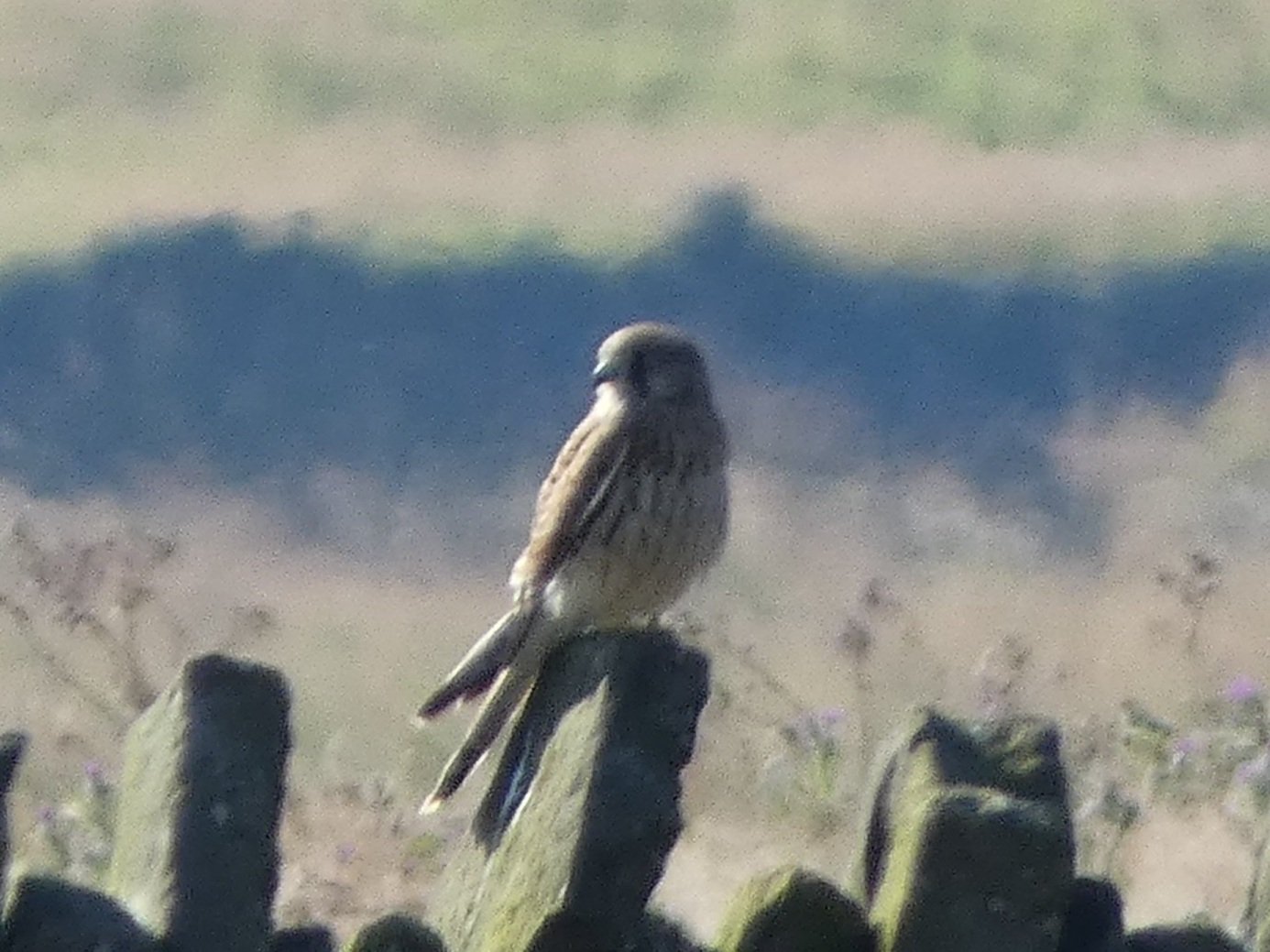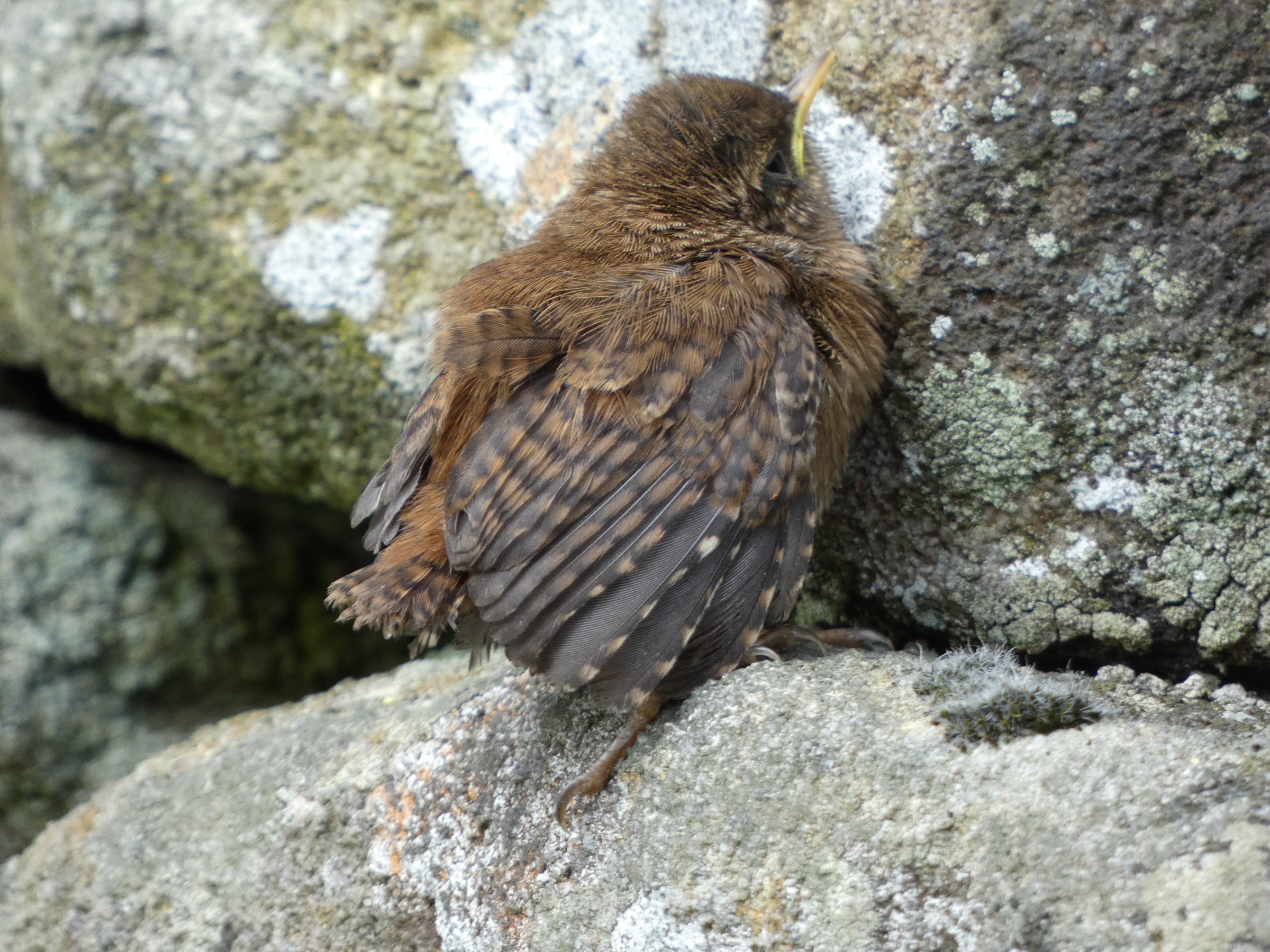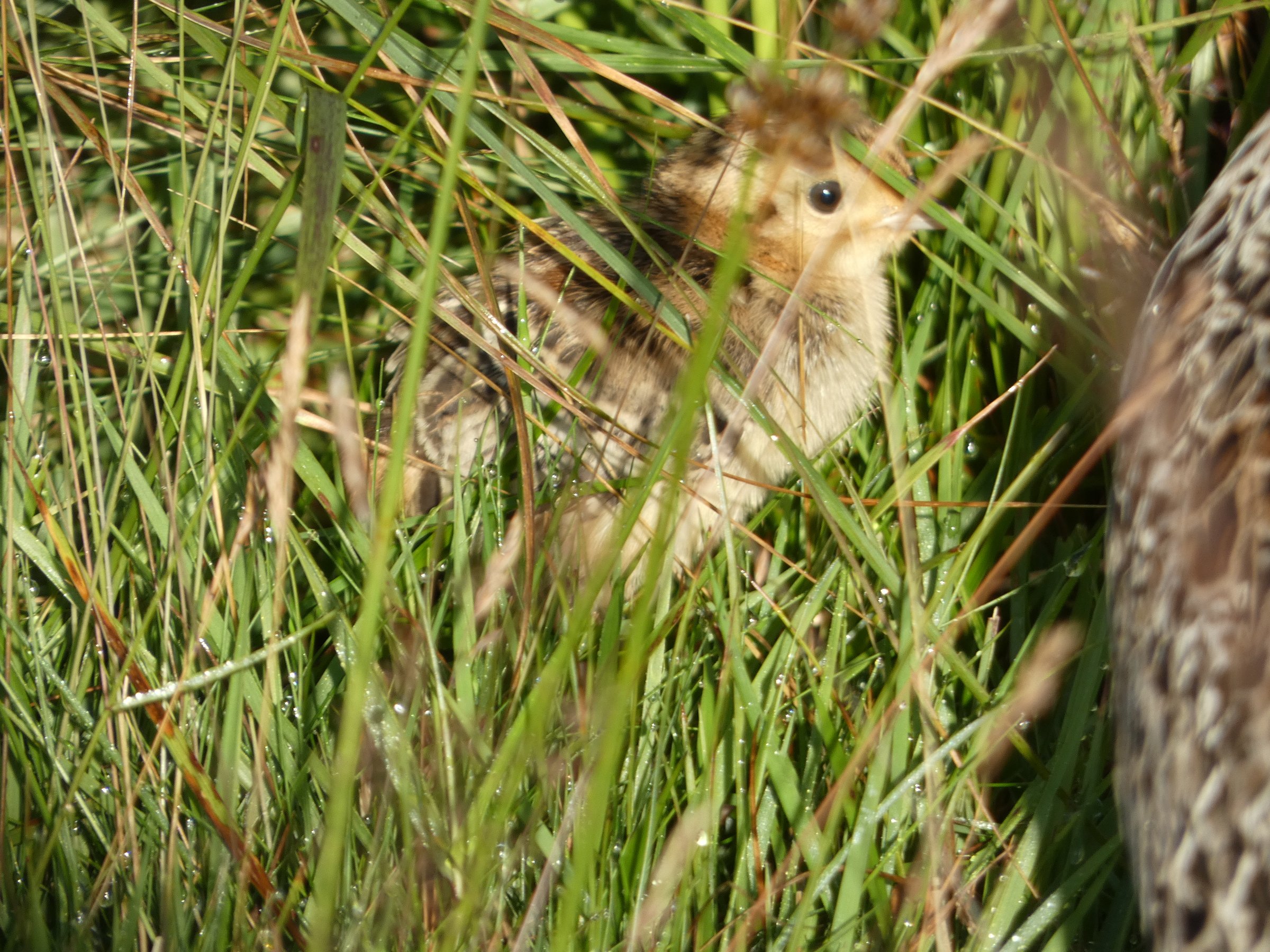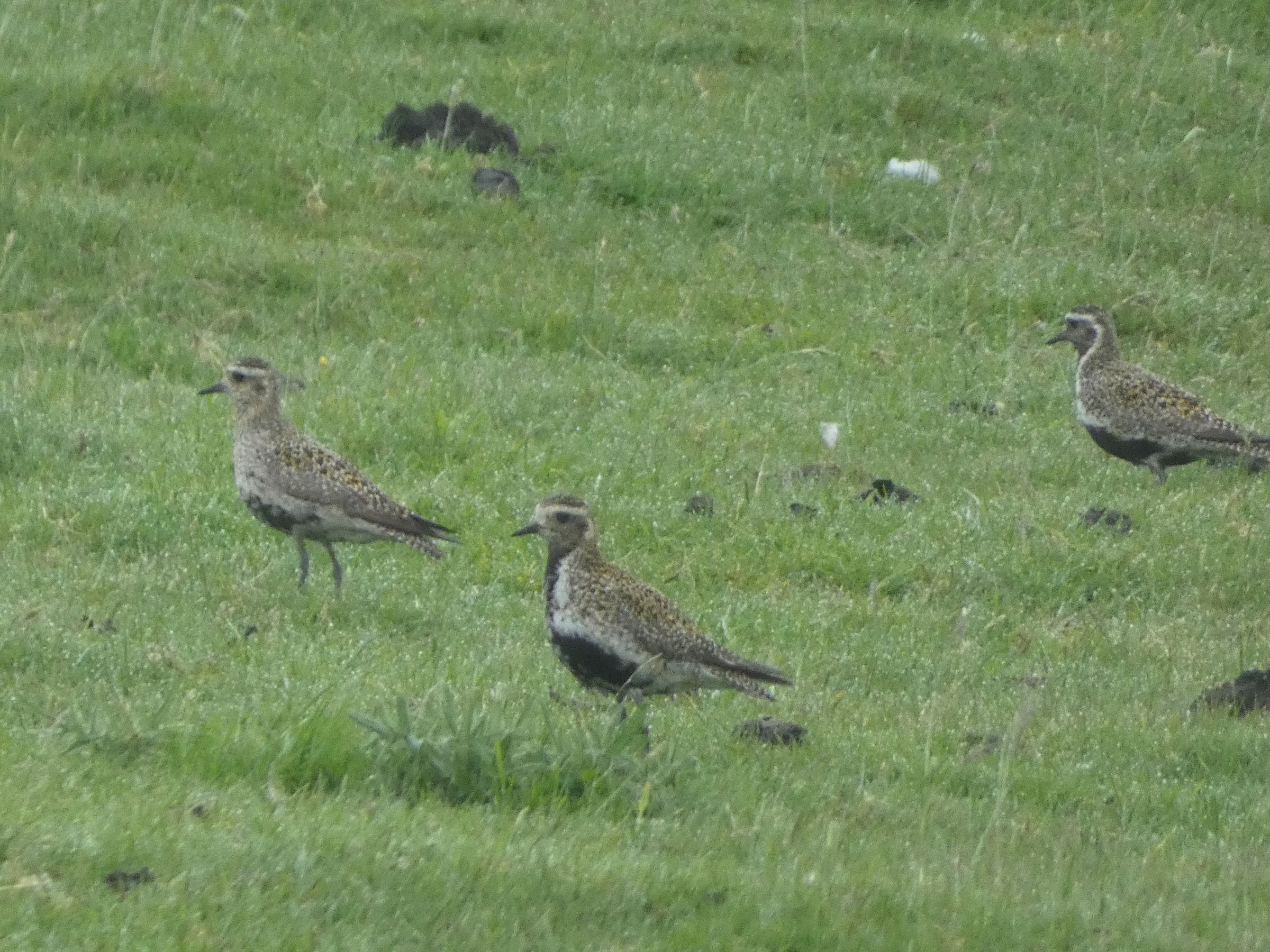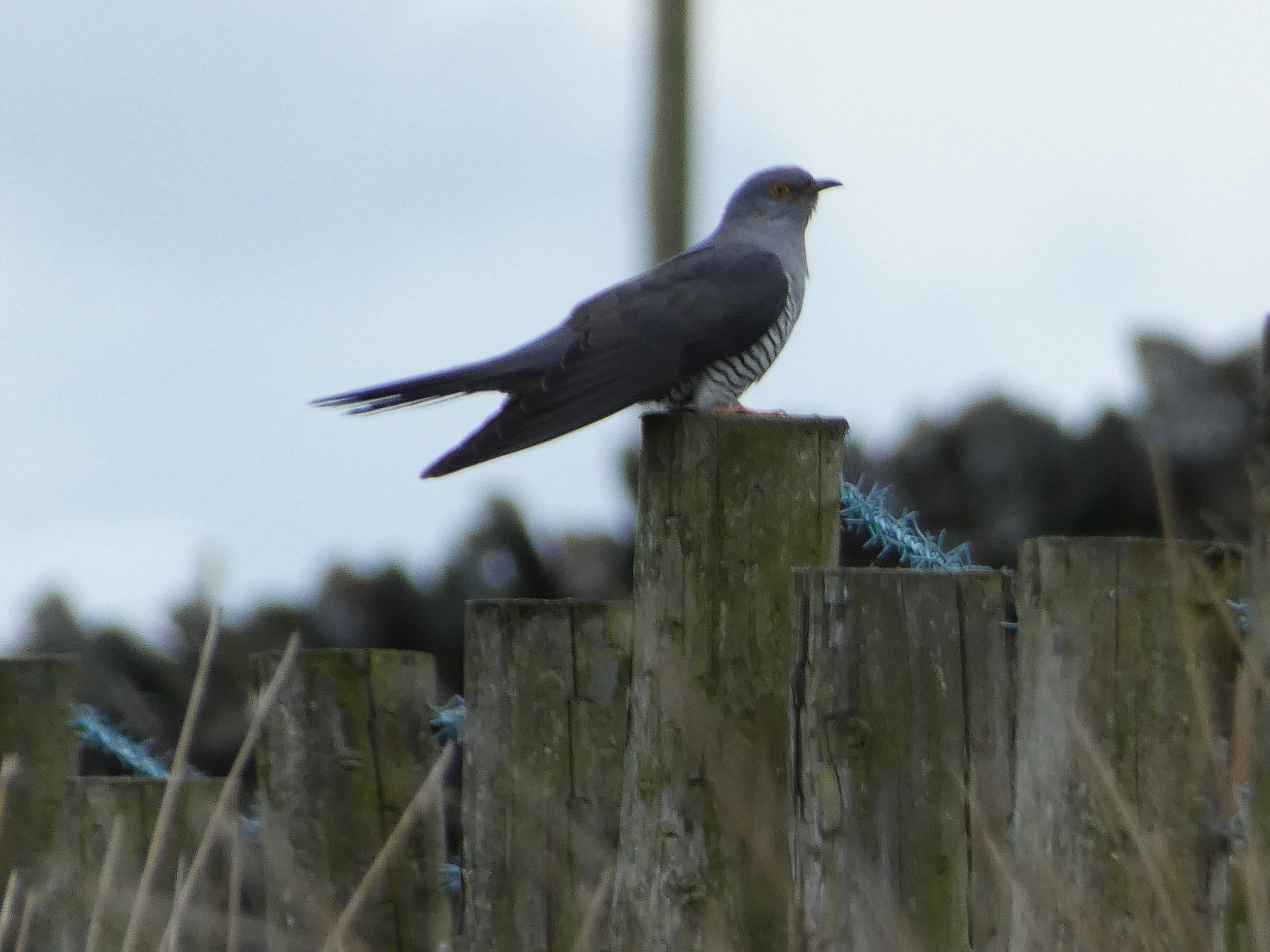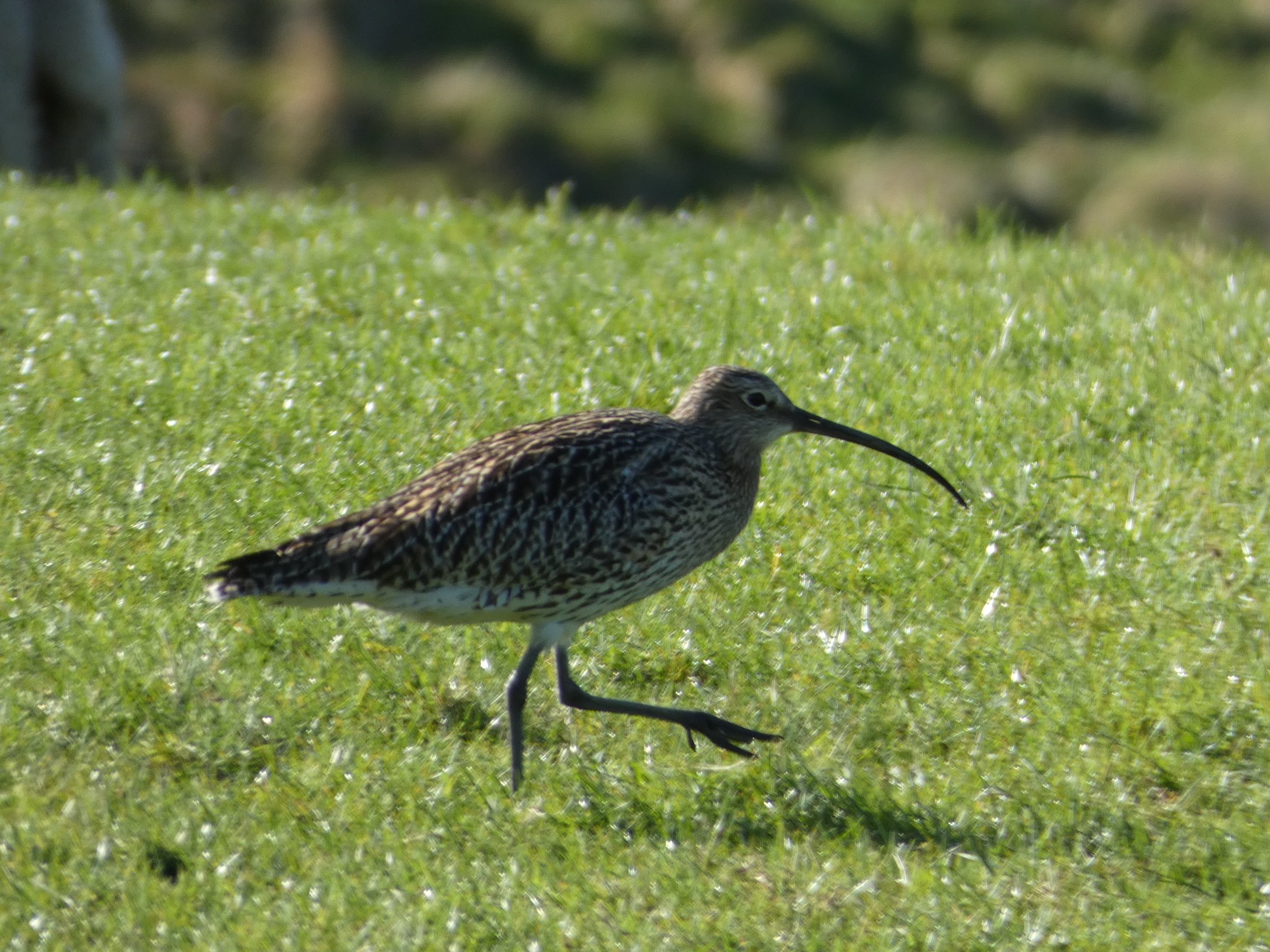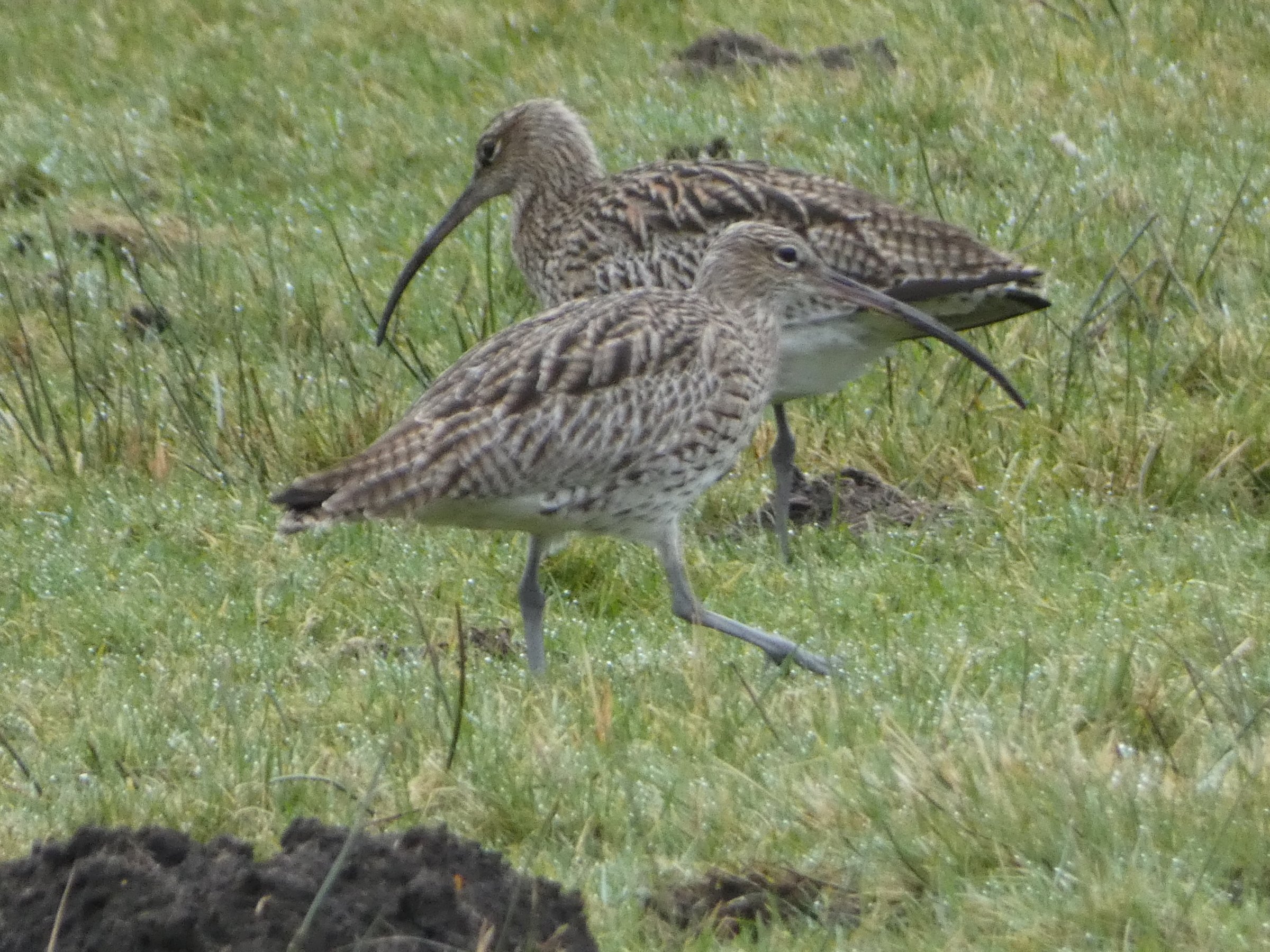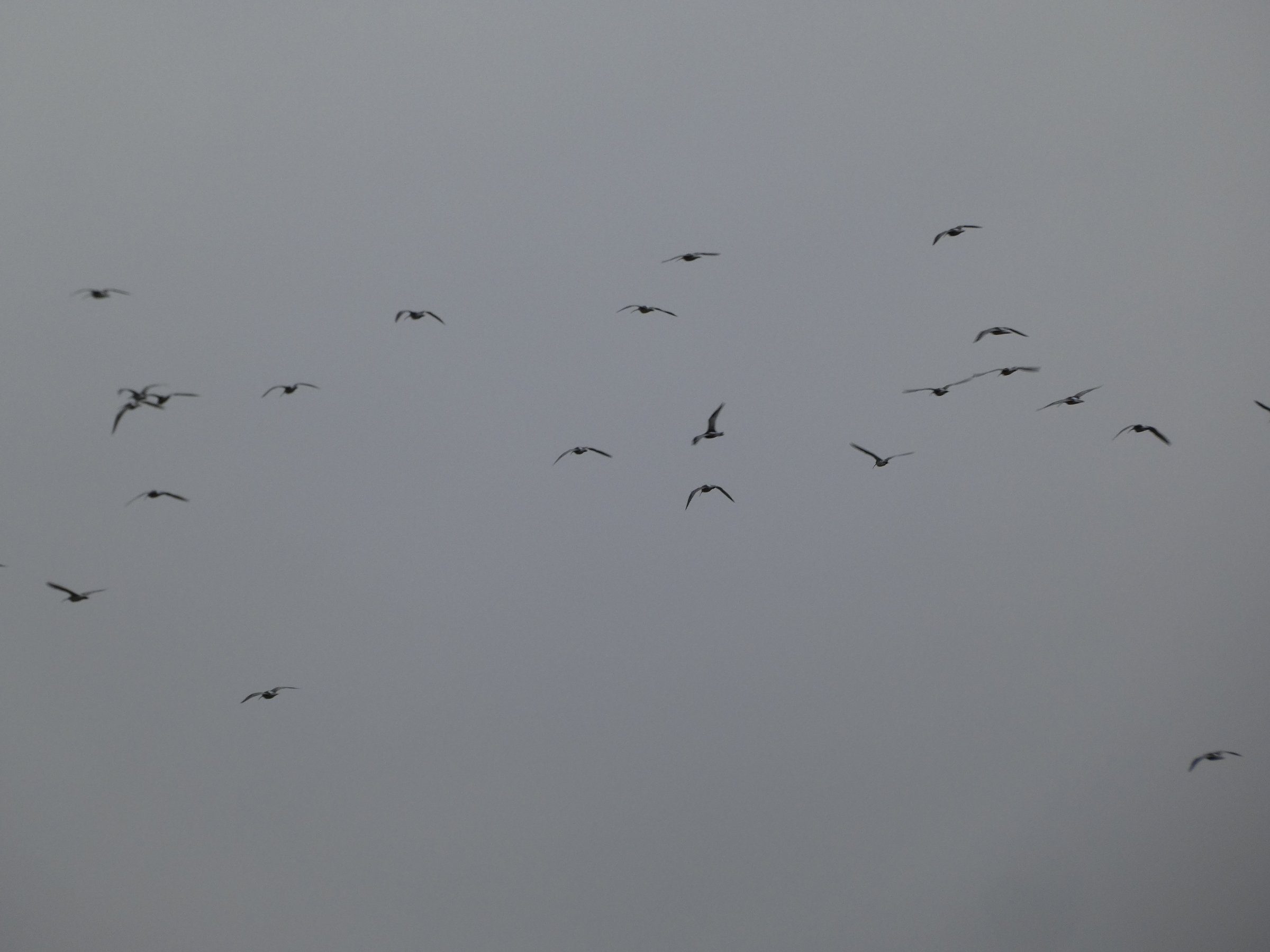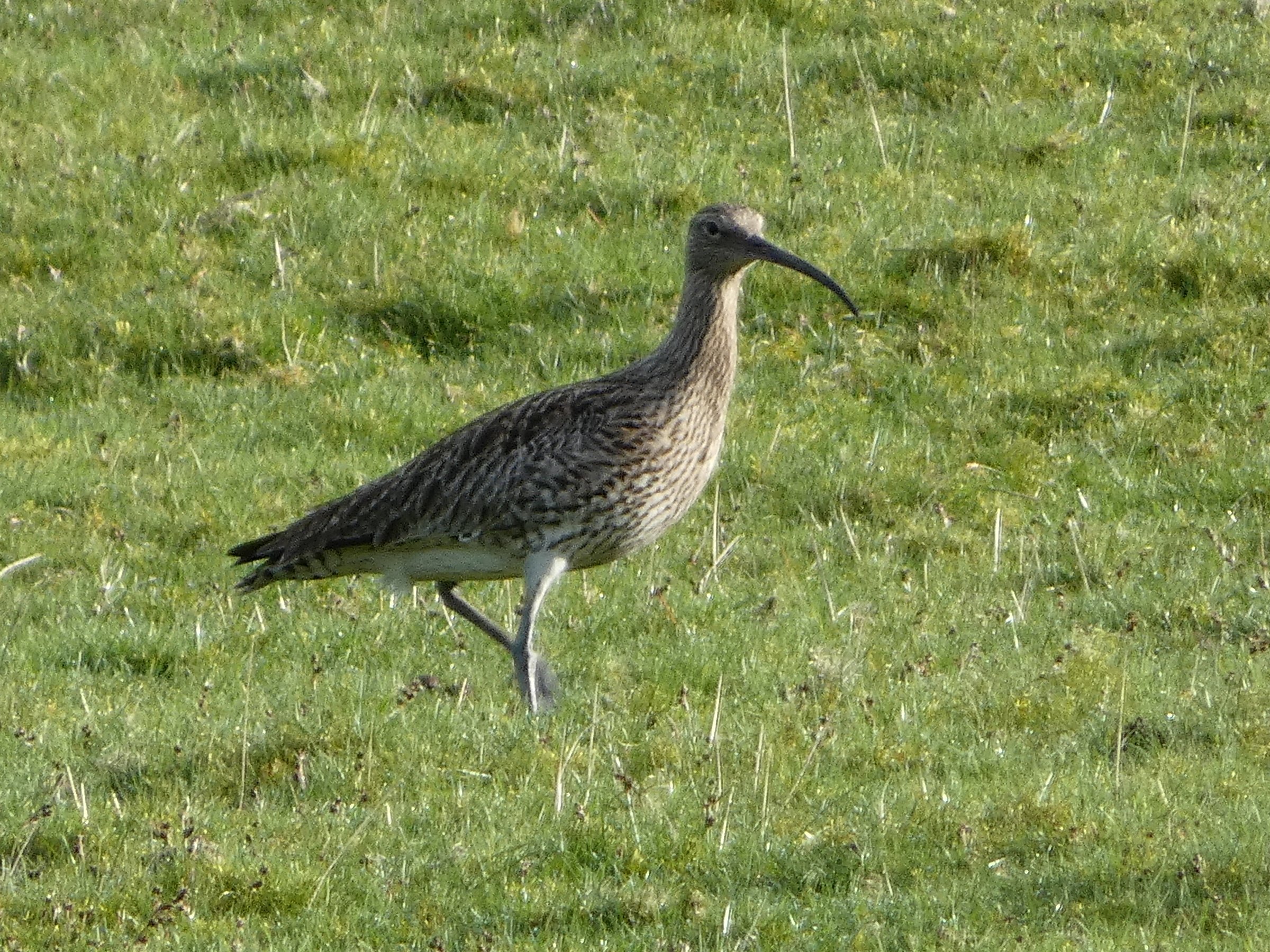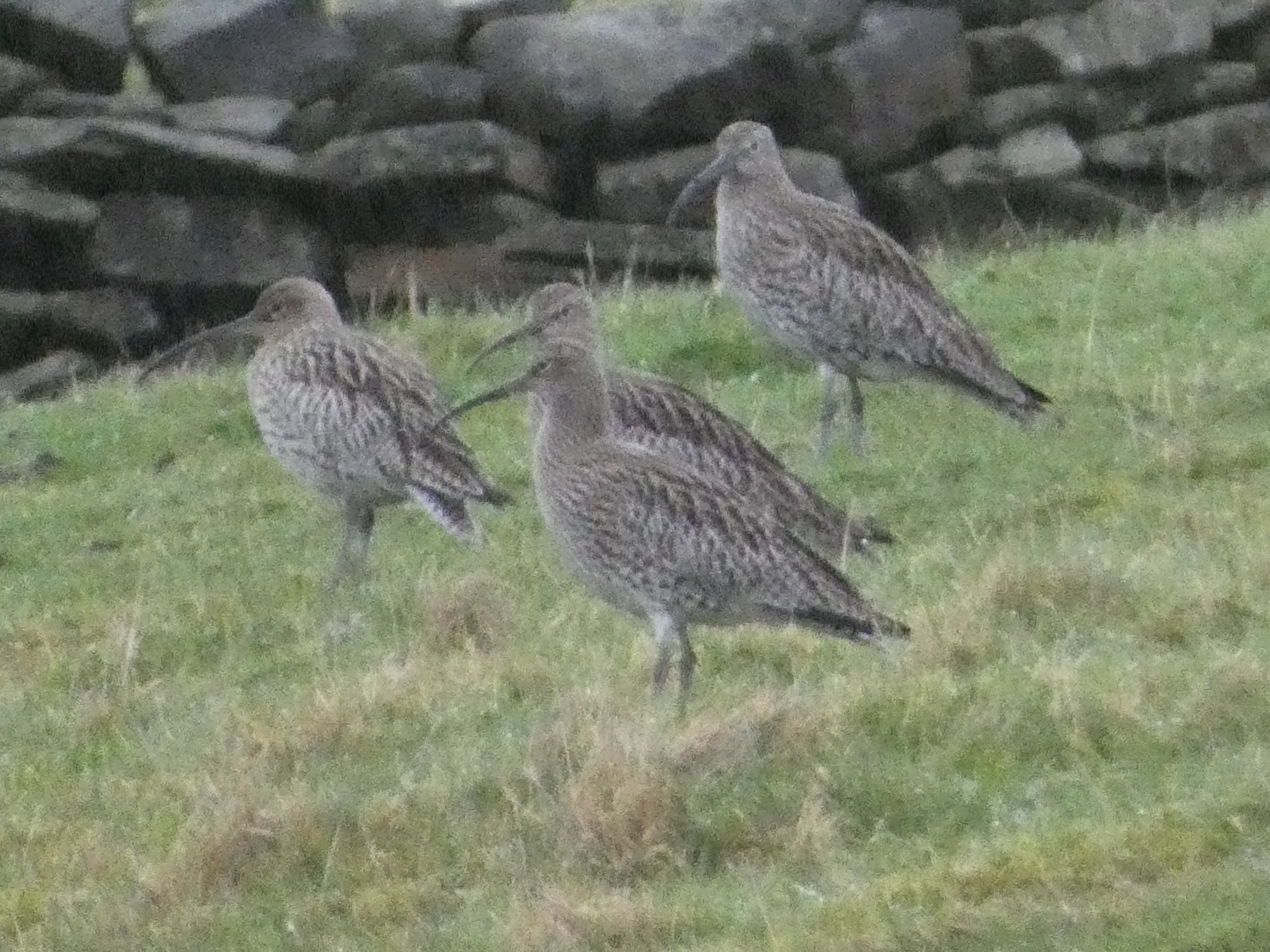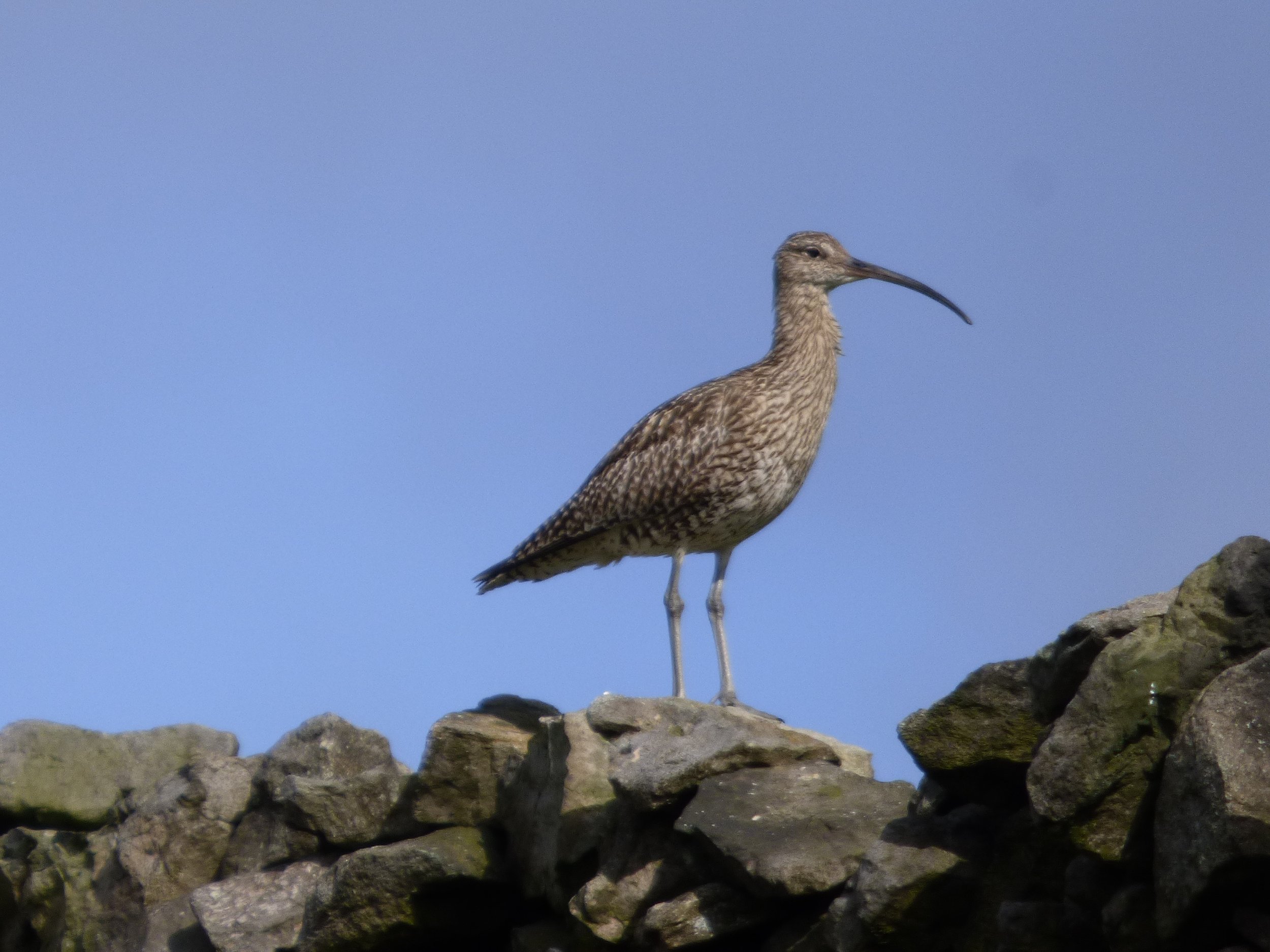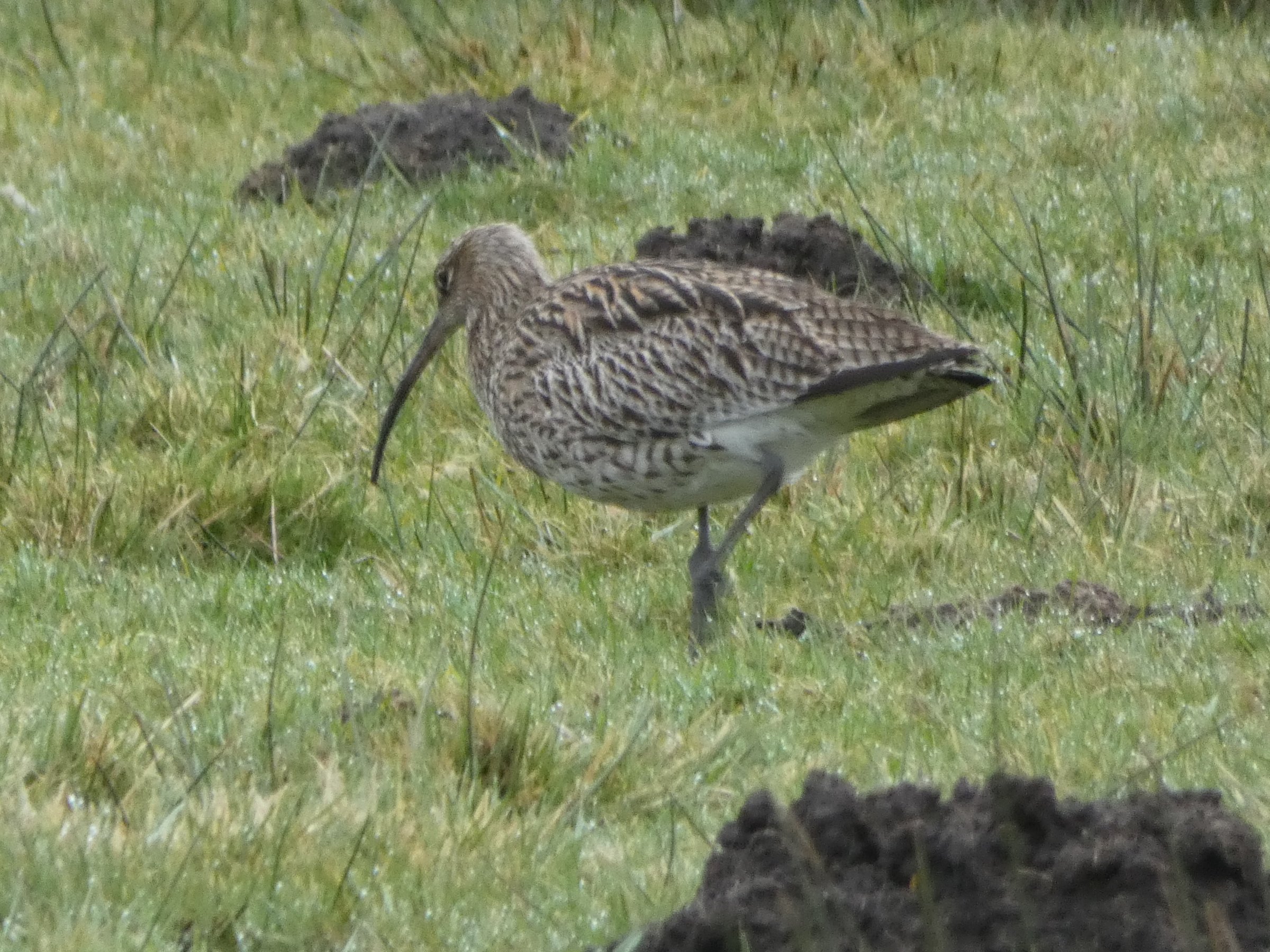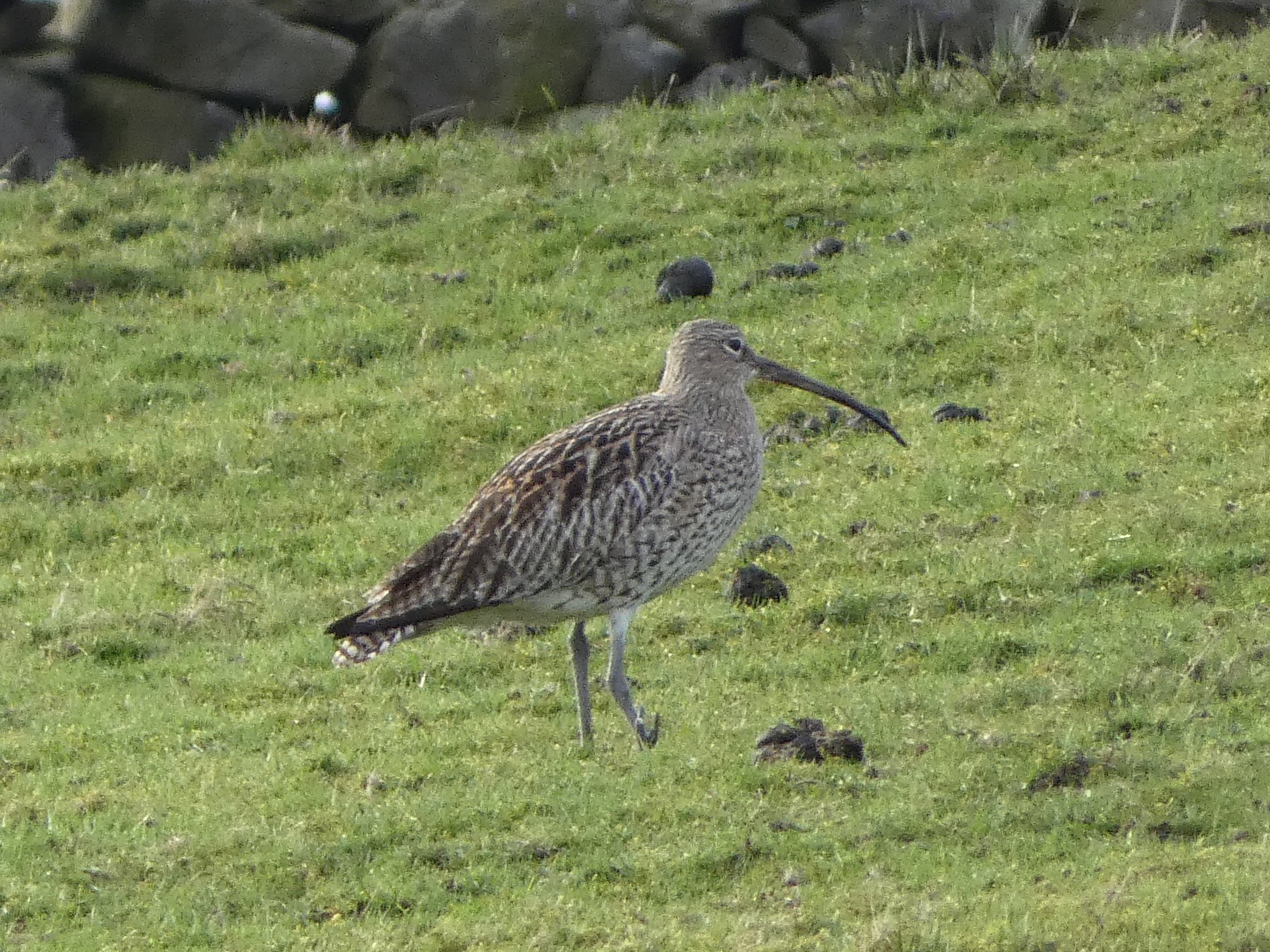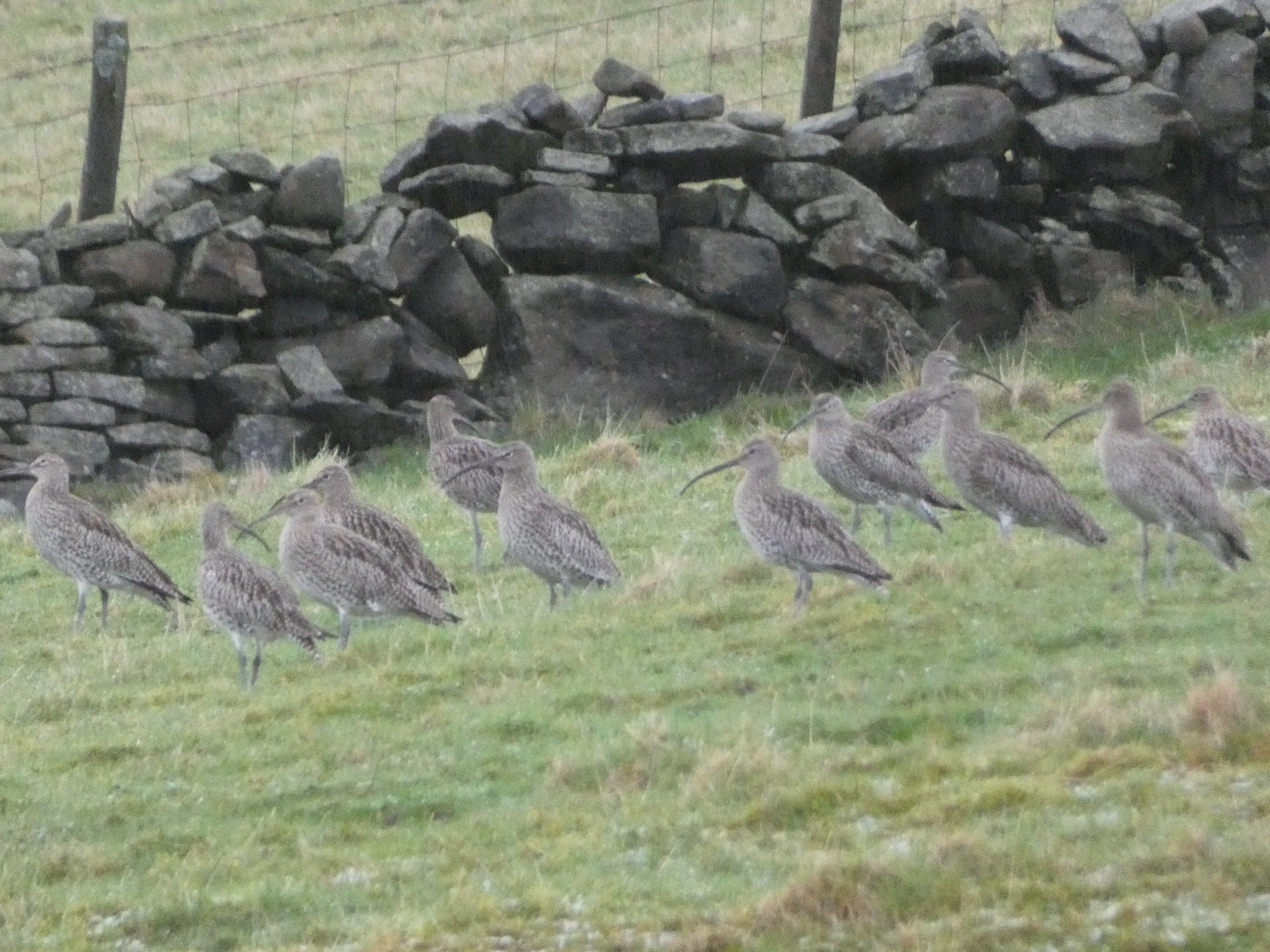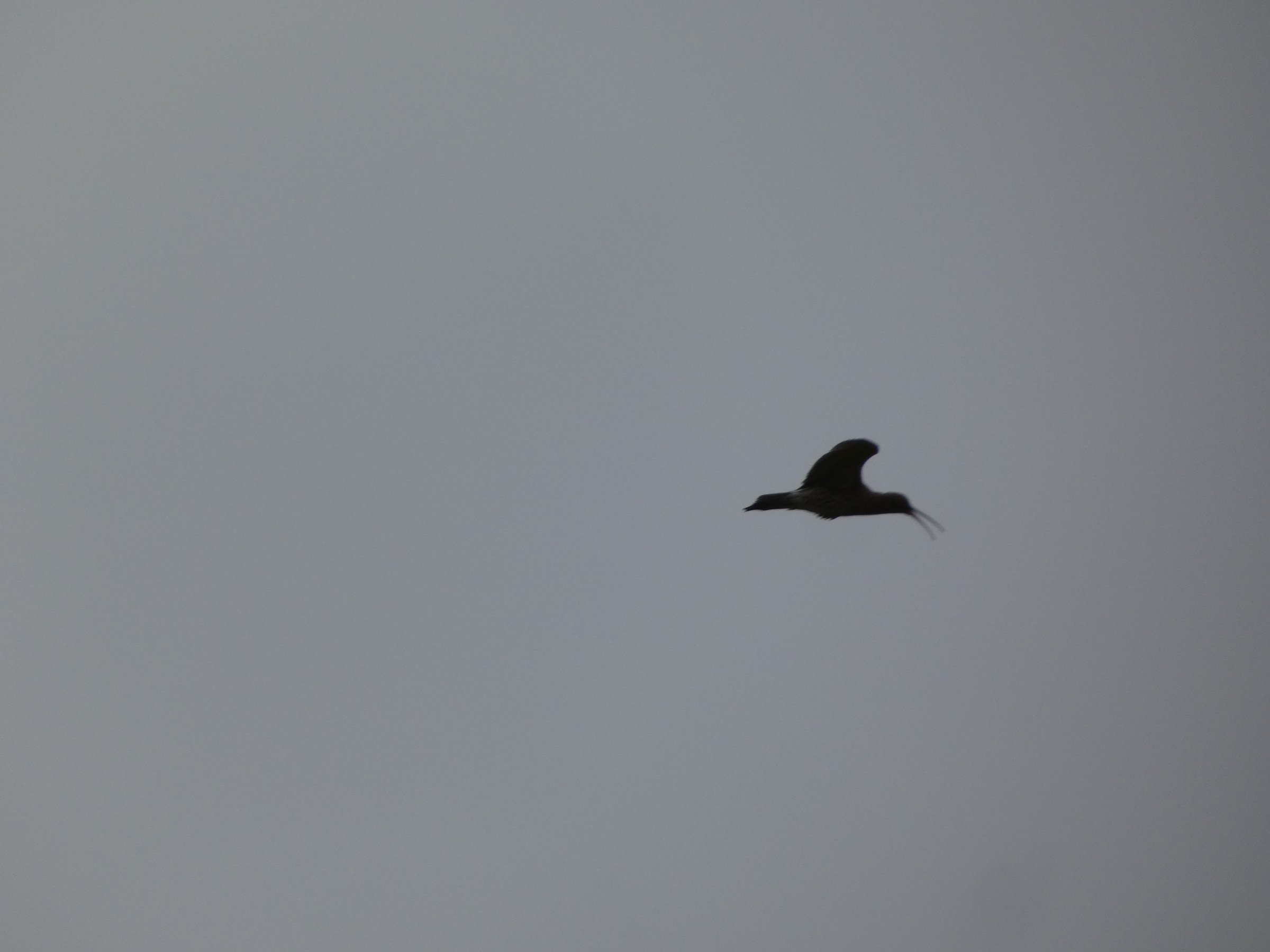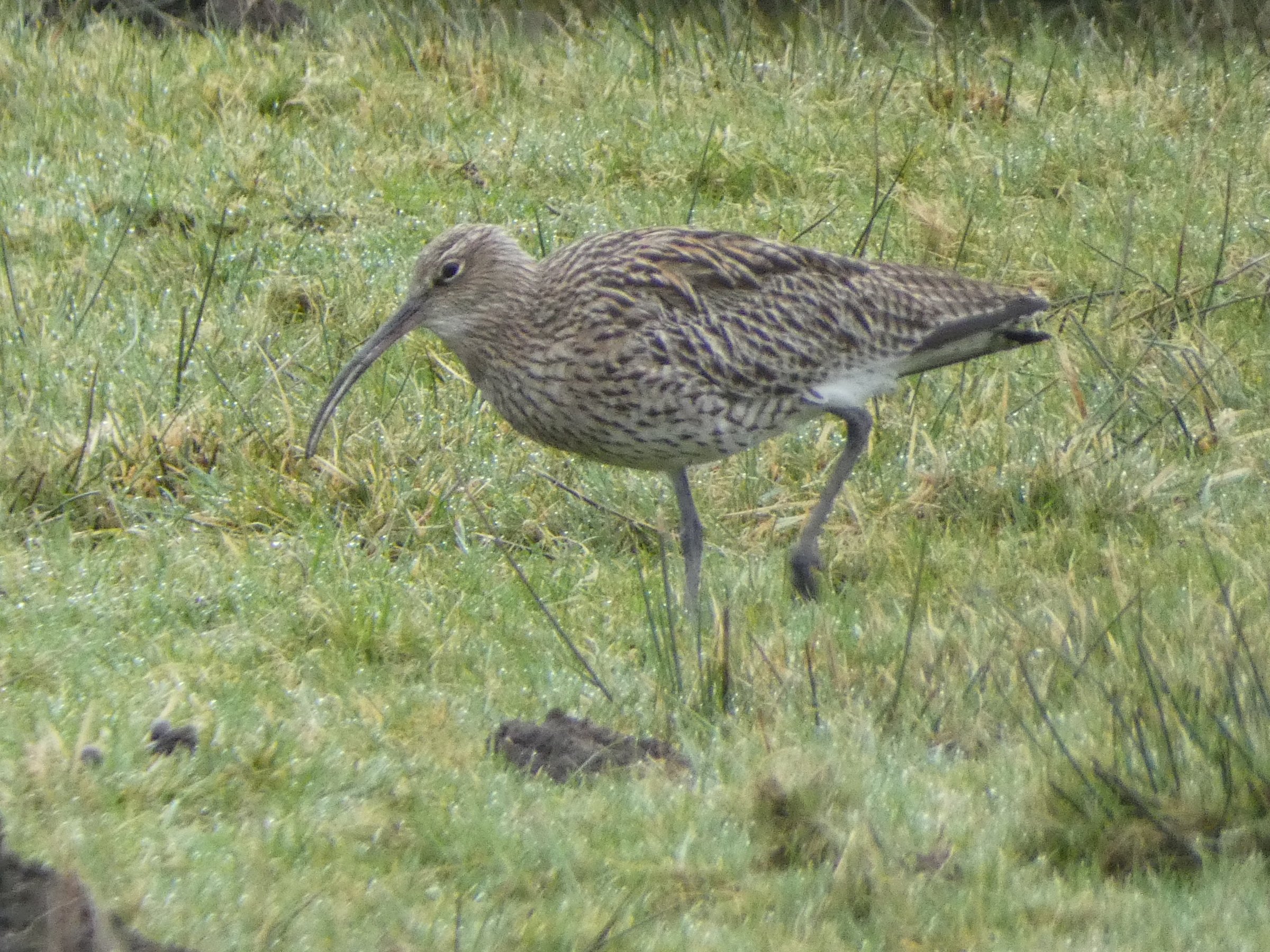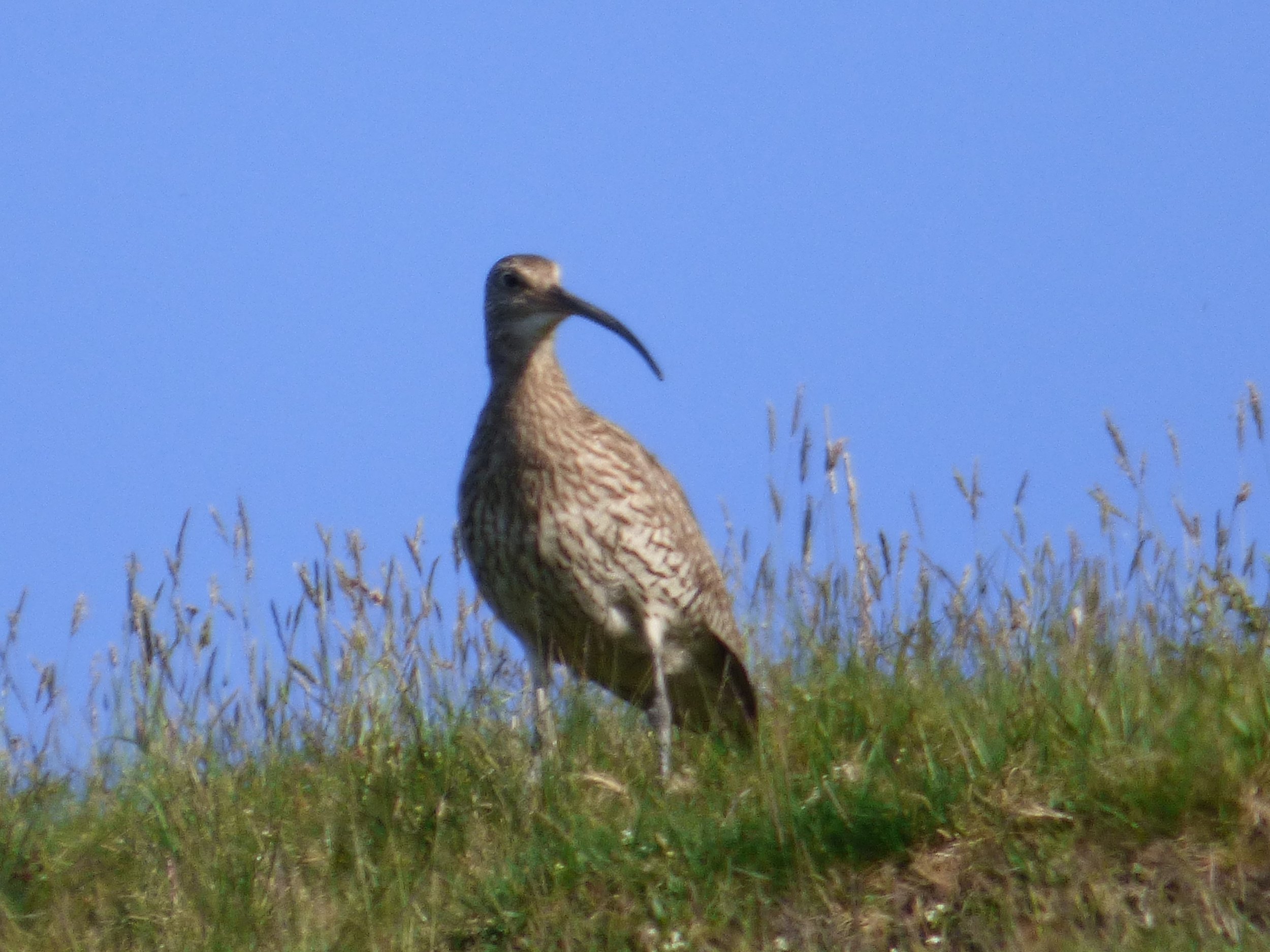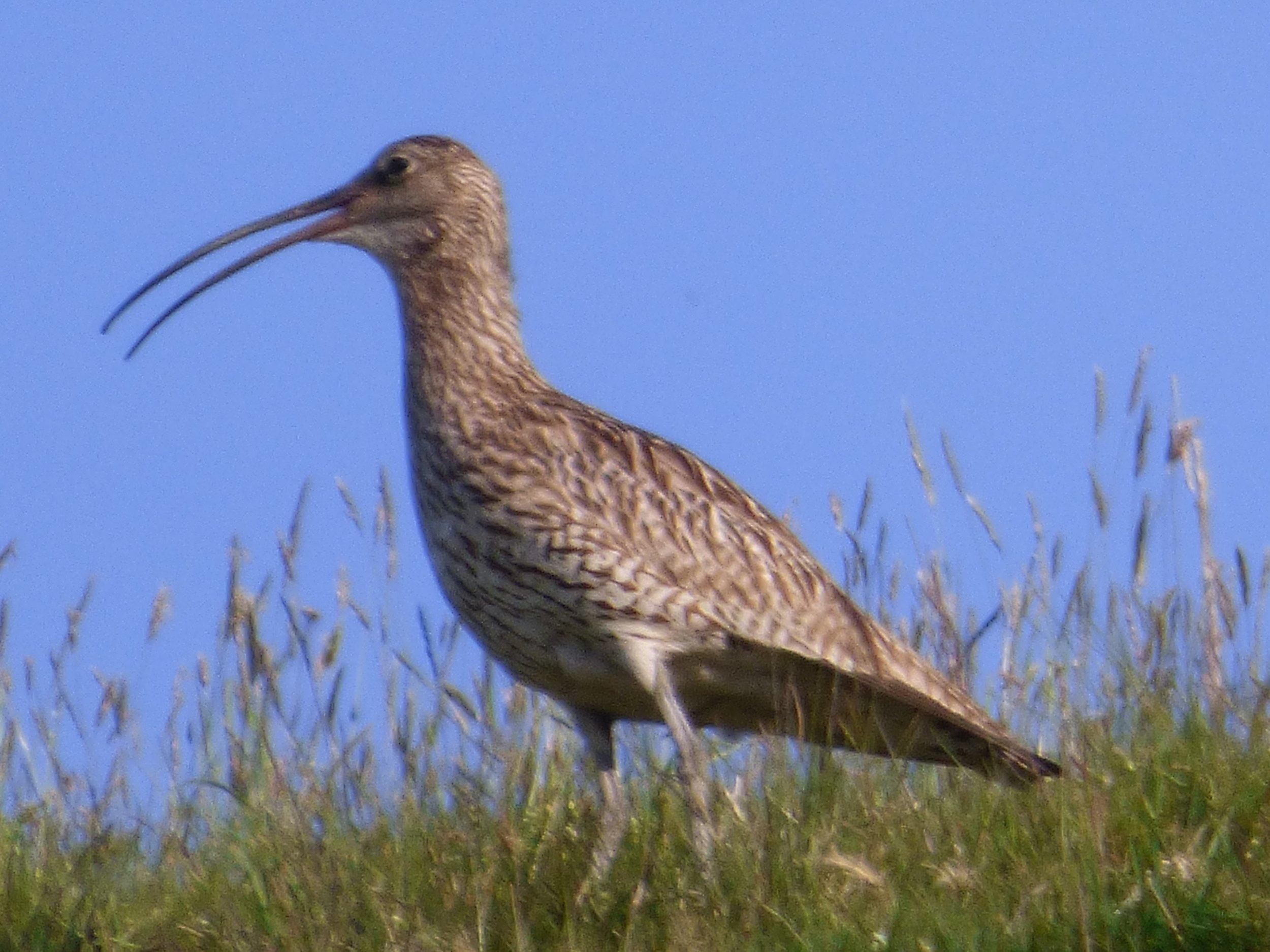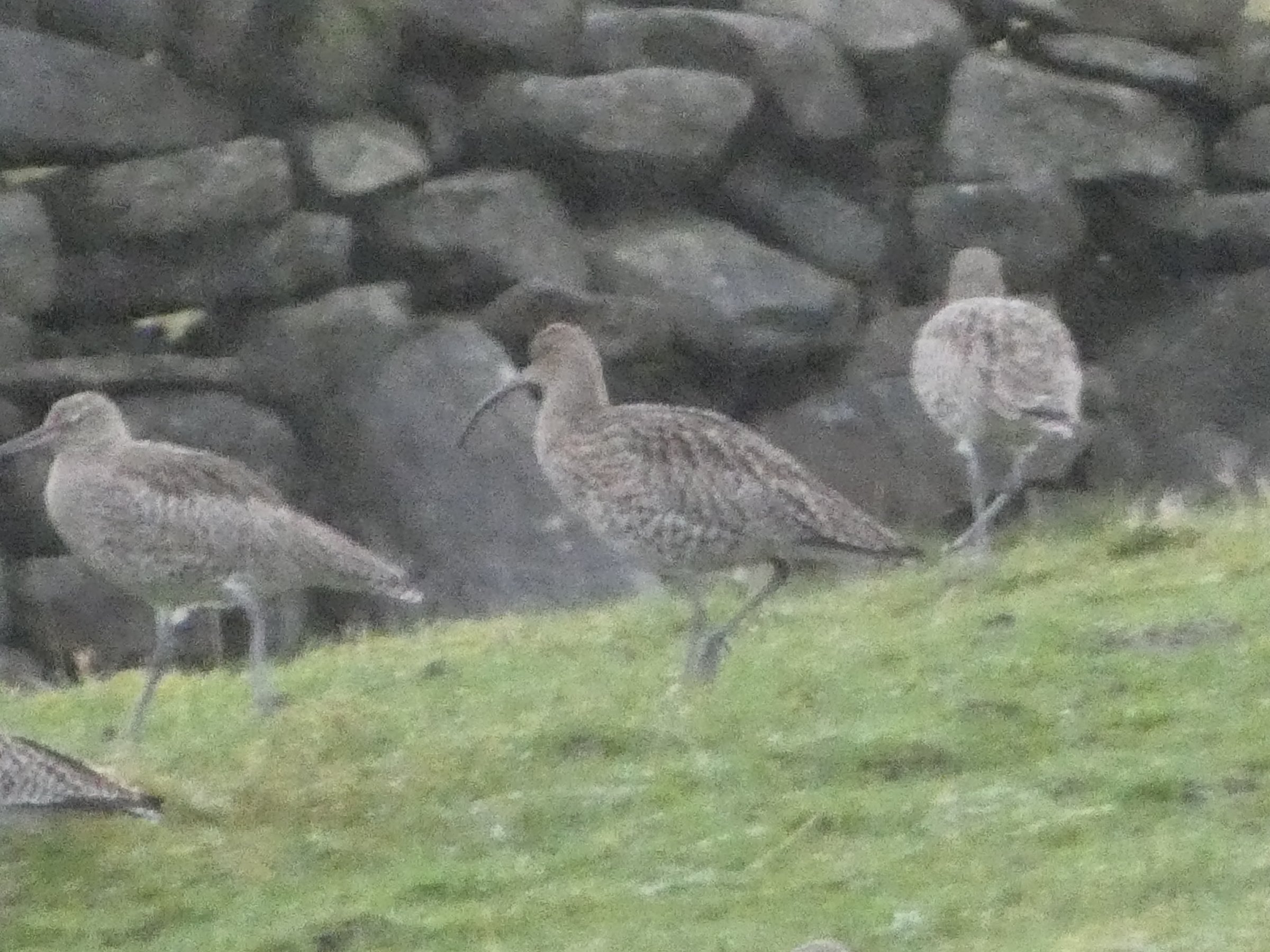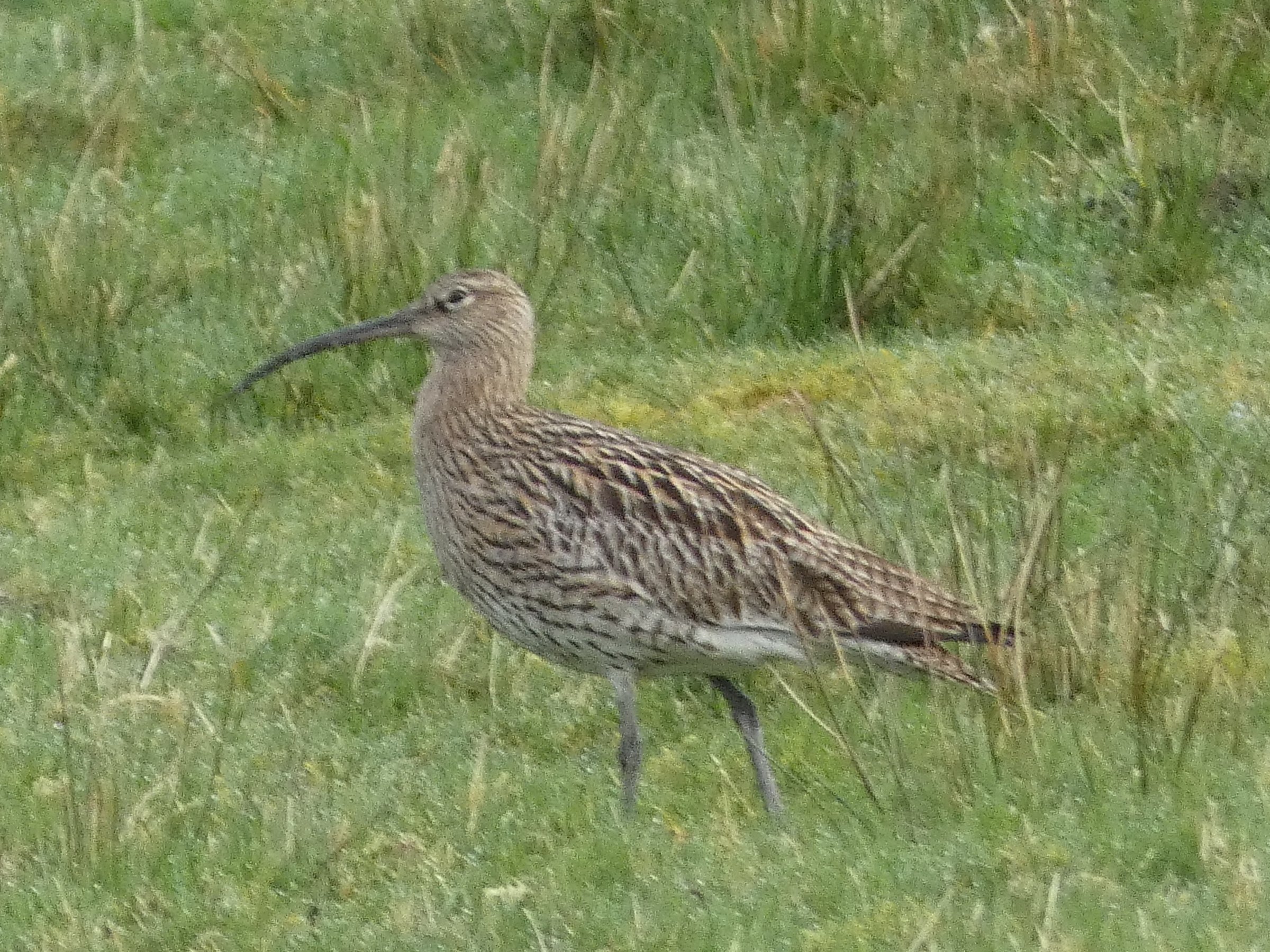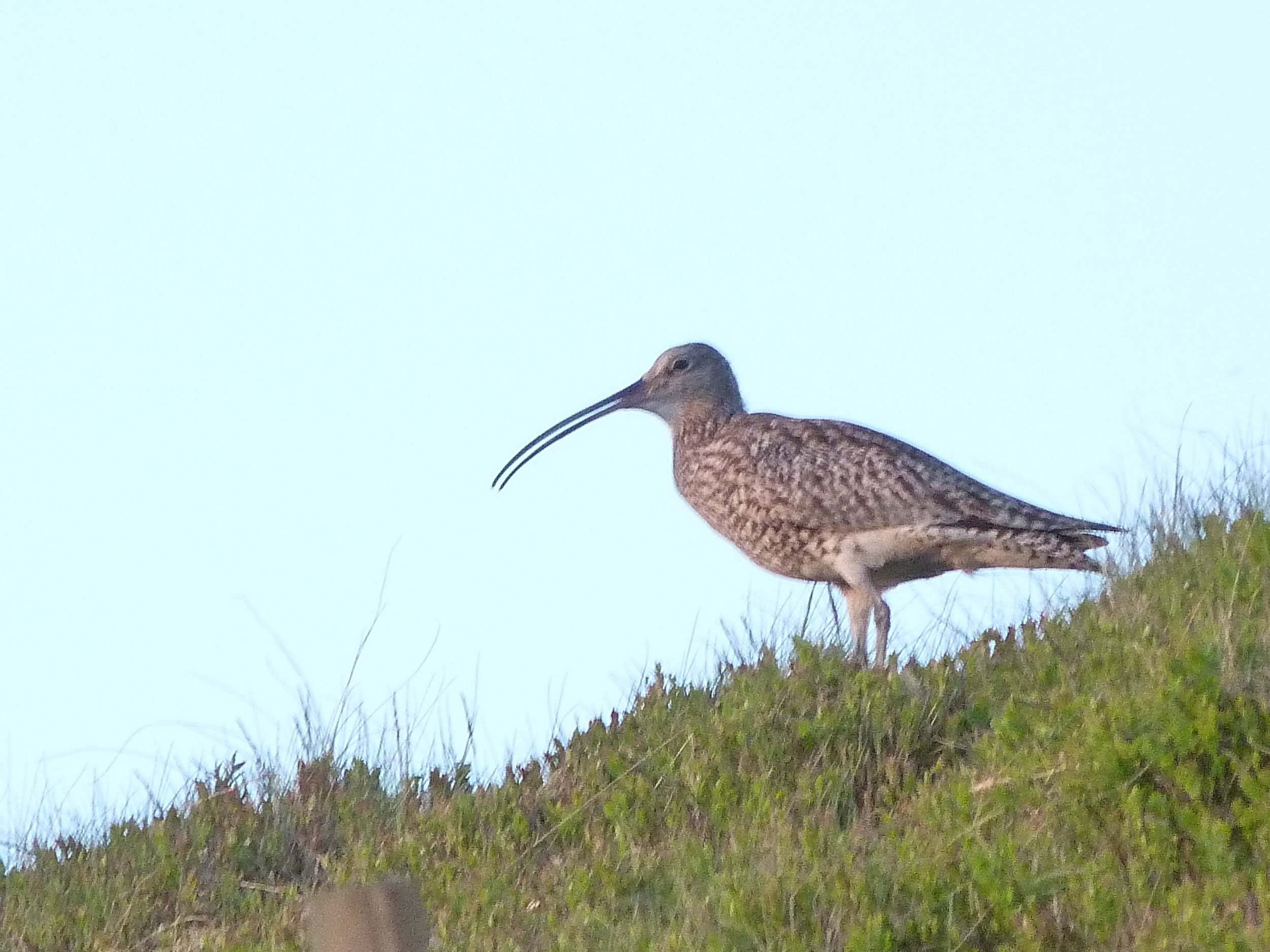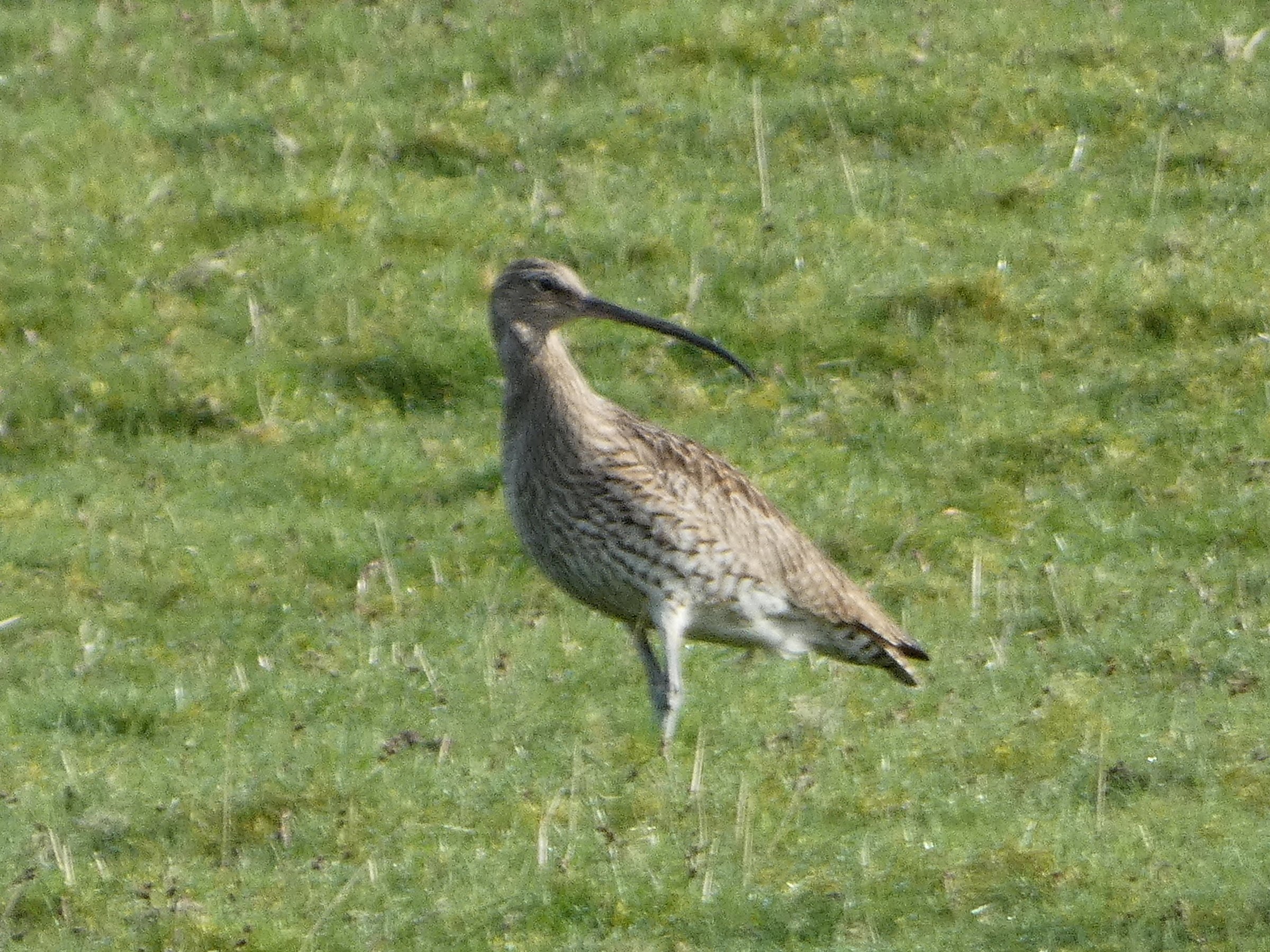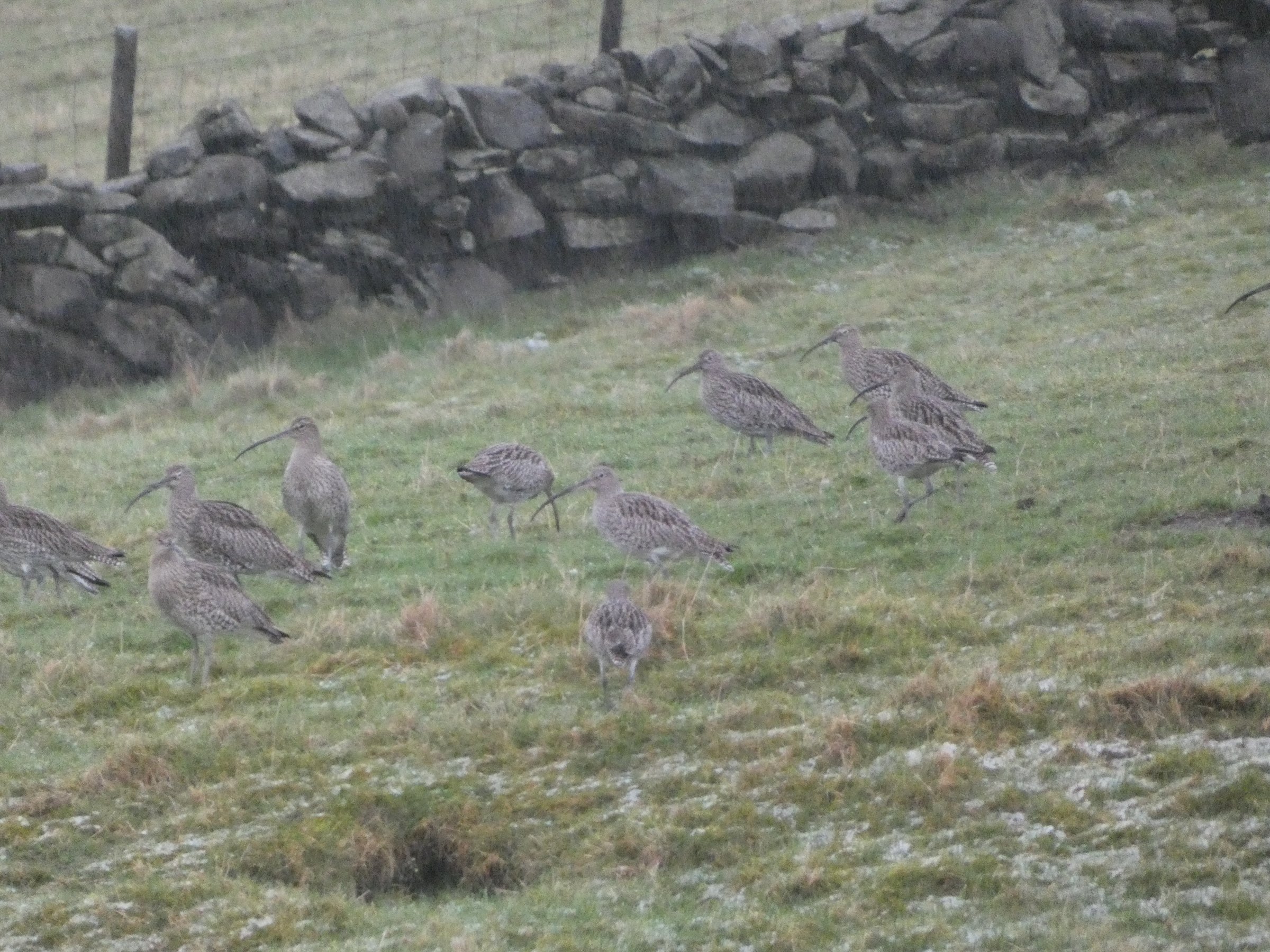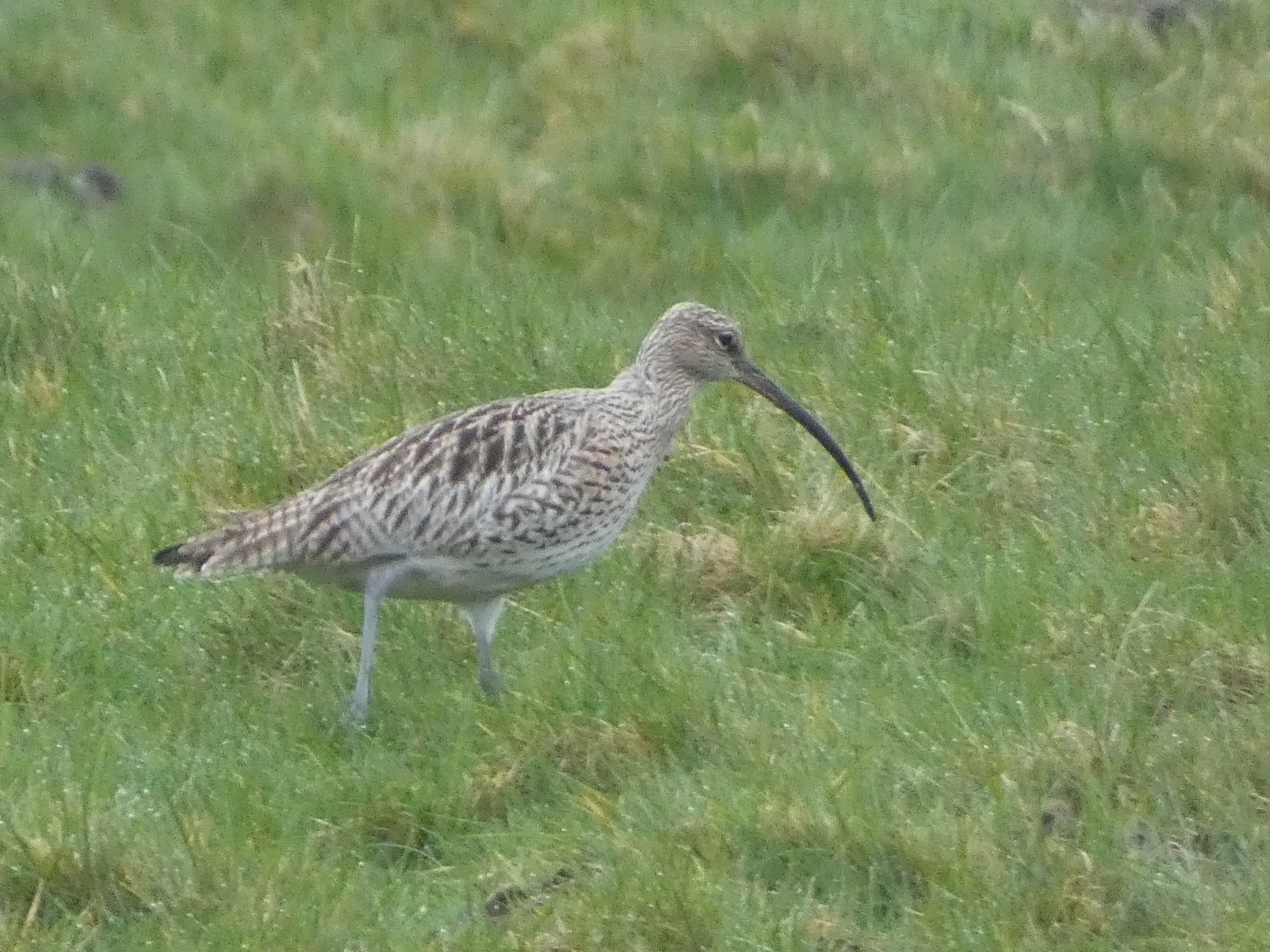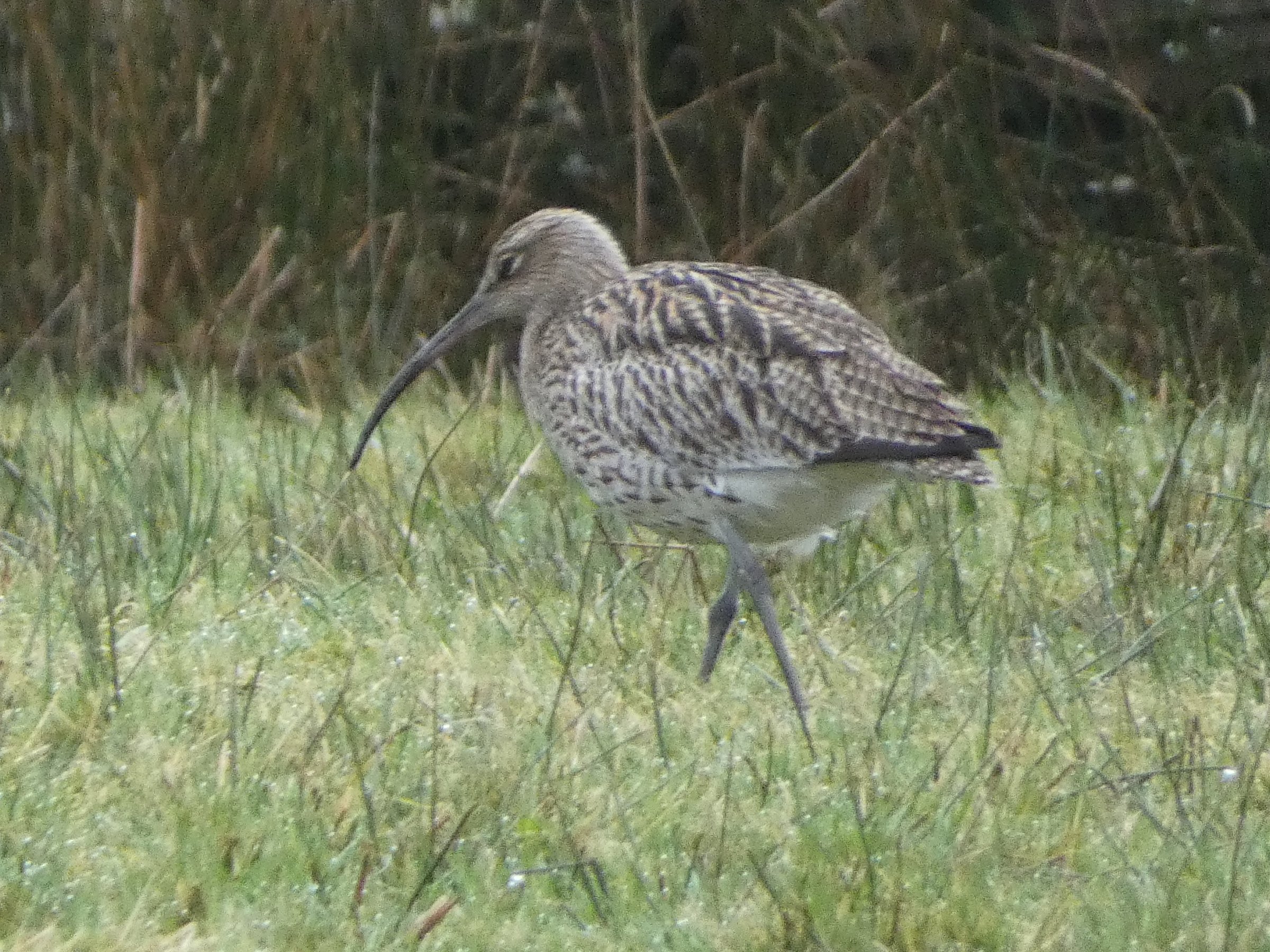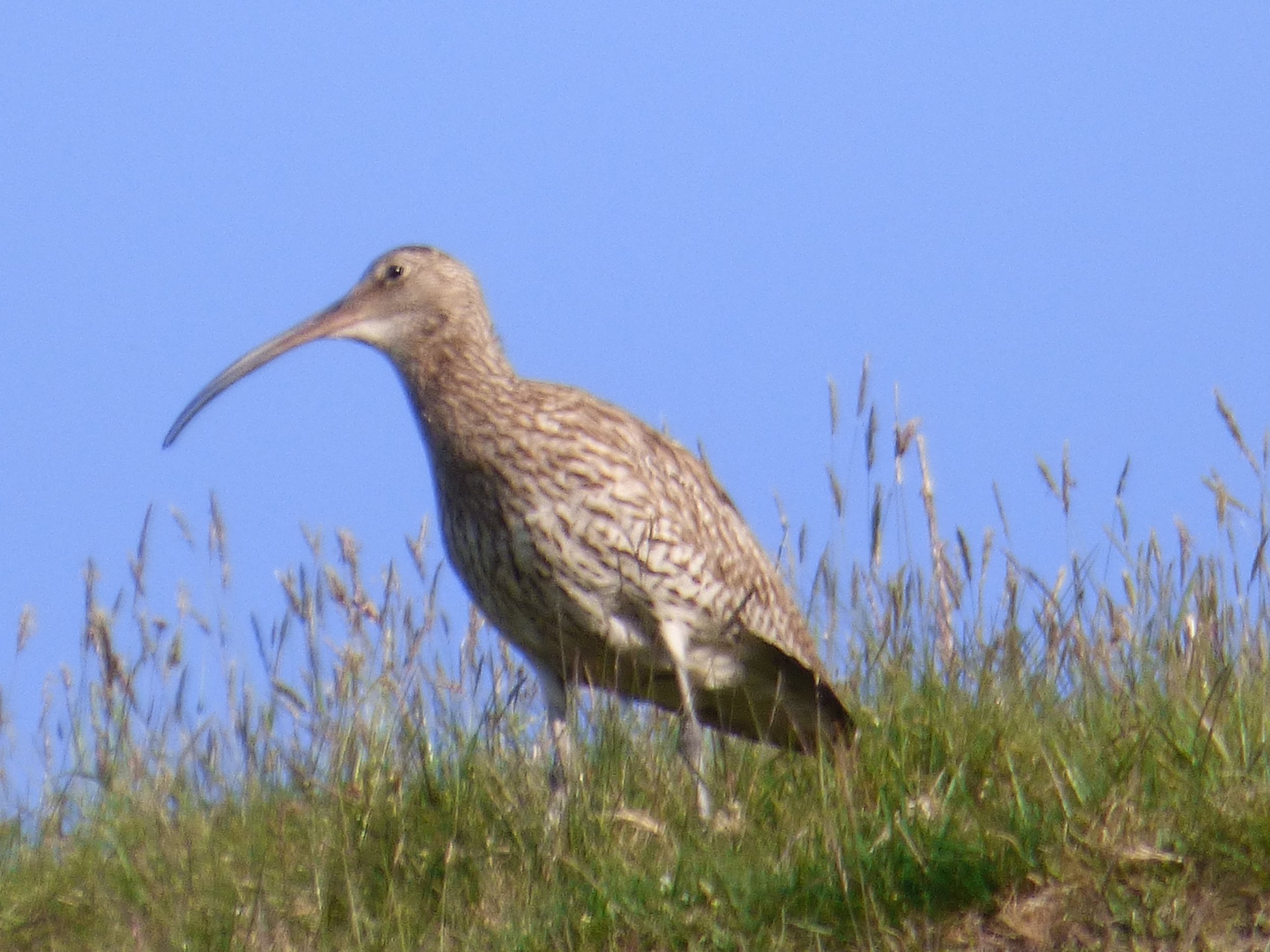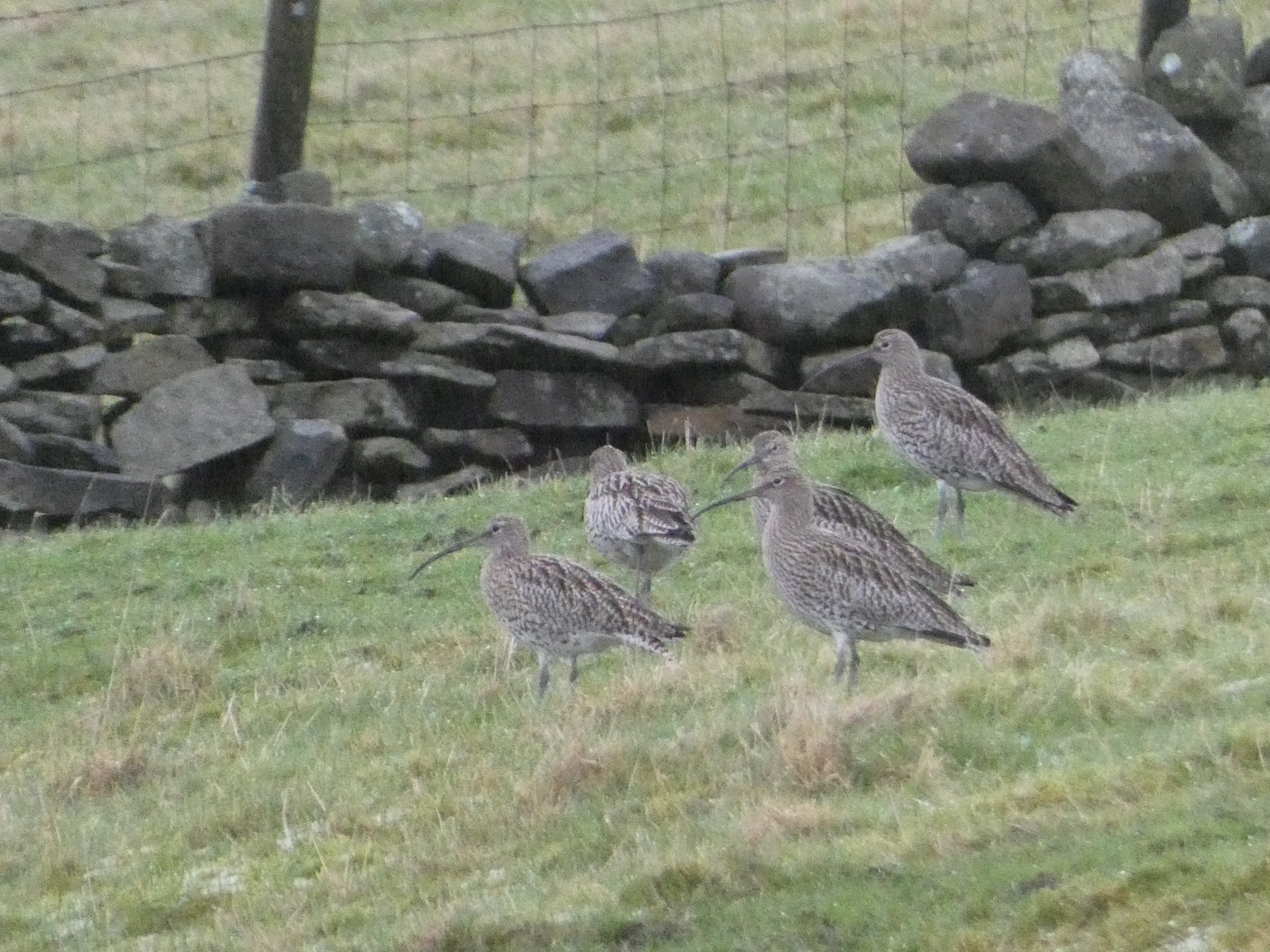Tweet of the Day - Walshaw Moor Bird Sightings - February to July 2024
Tweet of the Day - Tuesday 30 July 2024
Last sighting of the season of a Curlew flying over Walshaw Moor. The Curlews and their offspring have now headed off to coastal estuaries for the winter, but they’ll be back again in mid February next year.
Tweet of the Day - Monday 29 July 2024
Little Owl on the chimney of Coppy, the ruined farmhouse just below Shackleton Knoll.
Tweet of the Day
Tweet of the Day - Sunday 28 July 2024
Kestrel on Shackleton Moor in the early morning sunshine. Now the ground-nesting waders are departing from the moor, raptors such as kestrels, buzzards and owls rule the roost.
Tweet of the Day - Saturday 27 July 2024
Short-eared Owl hunting on Walshaw Moor. Photograph: Penny Price
Tweet of the Day
Tweet of the Day - Friday 26 July 2024
The summer sunshine has brought lots of moths and butterflies out onto the moors. This Small Tortoiseshell was spotted high up on Shackleton Moor.
Tweet of the Day - Thursday 25 July 2024
Large Heath on Walshaw Moor. This bog-loving butterfly is mostly found in the north of Britain, where it breeds on the uplands during the summer months.
Tweet of the Day
Tweet of the Day - Wednesday 24 July 2024
Fledgling Wren on a wall next to Walshaw Moor this morning. Two of its siblings were also close by and their parent was making vociferous chirps of encouragement,
Tweet of the Day - Tuesday 23 July 2024
Pheasant chick on Shackleton Moor early this morning. The chick’s mother was in close attendance, keeping a watchful eye over her clutch, probably her second brood of the season.
Tweet of the Day
Tweet of the Day - Monday 22 July 2024
Close up of a Northern Wheatear on Shackleton Moor, showing the intricate details of its plumage.
Tweet of the Day - Sunday 21 July 2024
Pied Wagtail on Shackleton Moor, part of the Walshaw Moor Estate. These birds are abundant on the fringes of the moor.
Tweet of the Day
Tweet of the Day - Saturday 20 July 2024
Although most familiar as garden birds, Wrens are highly adaptable to different habitats and can often be seen on the uplands close to the moor.
Tweet of the Day - Friday 19 July 2024
Fledgling starlings this morning just below Shackleton Moor near Abel Cote Farm in Crimsworth Dean. Starlings are gregarious creatures from birth. They often fly and forage in large groups.
Tweet of the Day
Tweet of the Day - Thursday 18 July 2024
Fledgling Goldfinch trying out its wings and learning how to feed on the thistles on the moor. Like many birds, Goldfinches produce several broods over the course of the season, so this is a recent arrival.
Tweet of the Day - Wednesday 17 July 2024
Goldfinch feasting on thistledown on Wadsworth Moor early this morning. There are numerous Goldfinches around on the moor at the moment attracted by the abundance of thistles.
Tweet of the Day
Tweet of the Day - Tuesday 16 July 2024
Oystercatcher perched in the mist this morning on chimney pot at Thurrish Farm in Crimsworth Dean next to the Walshaw Moor Estate. Oystercatchers nest on the high ground at the head of Crimsworth Dean. This is one of the last to be photographed this season.
Tweet of the Day - Monday 15 July 2024
Swallow with plumage glistening in the early morning sunshine on Stairs Lane at the end of Crimsworth Dean just below Walshaw Moor. Swallows spend most of their time in flight so they are difficult to photograph except on the rare occasions they alight on a telegraph wire.
Tweet of the Day
Tweet of the Day - Sunday 14 July 2024
Fledgling Kestrel on Wadsworth Moor this afternoon, its fluffy plumage indicating that this is a juvenile. This bird was seen mobbing a Barn Owl, even though it was much smaller in size.
Tweet of the Day - Saturday 13 July 2024
Lapwing chick in Walshaw Dean this morning, part of a large colony on the moor above Lower Walshaw Dean Reservoir. Although the chicks are nearing maturity and almost full size, their crests and plumage are not yet fully developed.
Tweet of the Day
Tweet of the Day - Friday 12 July 2024
Fledgling Meadow Pipit on Wadsworth Moor with downy head and underparts, identified by the plumage on its wings. There are numerous Meadow Pipits around at the moment, indicating that they have had a successful breeding season on and around the Walshaw Moor Estate.
Tweet of the Day - Thursday 11 July 2024
Adult Curlew standing sentinel on Shackleton Moor, ready to ward off predators if it thinks its offspring are under threat.
Tweet of the Day
Tweet of the Day - Thursday 11 July 2024
Adult Lapwings are still keeping a watchful eye over their juveniles on Walshaw Moor and will continue to do so until they’re mature enough to fly to their winter quarters on the coast.
Tweet of the Day - Thursday 11 July 2024
Fledgling Northern Wheatear on Wadsworth Moor, one of the migrants that returns to the moor each spring to breed. Although still rather downy, hints of its adult plumage are just starting to appear.
Tweet of the Day
Tweet of the Day - Wednesday 10 July 2024
Female Red Bunting near Shackleton Moor. As their name implies, Reed Buntings breed in marshy places, such as the plentiful rushes on the blanket bogs of Walshaw Moor. The male has a black head and throat, whereas the female has a brown moustache and white underparts.
Tweet of the Day - Tuesday 9 July 2024
Oystercatcher at 7.20am this morning on Wadsworth Moor above Crimsworth Dean.
Tweet of the Day
Tweet of the Day - Monday 8 July 2024
Mallards on Grain Water in Crimsworth Dean, not far from Shackleton Moor where the duck below was spotted.
Tweet of the Day - Sunday 7 July 2024
Female Mallard on Shackleton Moor. Although ducks are not generally thought of as moorland birds, they fly up from Crimsworth Dean and Hardcastle Crags to forage on Walshaw Moor.
Tweet of the Day
Tweet of the Day - Saturday 6 July 2024
Green Woodpecker photographed at 5.30pm today in Crimsworth Dean near Grain Water just below Wadsworth Moor. Its red cap, green wings and black and white striped tail can all be clearly seen on this image.
Tweet of the Day - Friday 5 July 2024
Meadow pipit with a big juicy moth in its beak on the moor above Crimsworth Dean, a reminder that the insect life supported by the moorland habitat provides food for its avian inhabitants.
Tweet of the Day
Tweet of the Day - Thursday 4 July 2024
The appropriately named Northern Wheatear returns to Walshaw Moor each spring to breed, and is one of the most familiar avian mascots of the moor.
Tweet of the Day - Wednesday 3 July 2024
The unmistakable silhouette of a Curlew on the wall boundary of the Walshaw Moor Estate. Somewhat ungainly with its spindly legs and knobbly knees, but elegant and streamlined in flight.
Tweet of the Day
Tweet of the Day - Tuesday 2 July 2024
Barn owls often still have hungry chicks in the nest at this time of year, so as the hay meadows are cut, they are likely to venture higher up onto Walshaw Moor in search of voles and mice. Look out for them just before dusk.
Tweet of the Day - Monday 1 July 2024
Goldfinches are seedeaters, so as the thistles come into flower, they are often seen on and around Walshaw Moor Estate. They flit around so busily that they are difficult to photograph but this one was captured on a nearby telegraph wire.
Tweet of the Day
Tweet of the Day - Sunday 30 June 2024
Short-eared Owl hunting on Walshaw Moor. Photograph: Penny Price.
Tweet of the Day - Saturday 29 June 2024
Pied Wagtail - one of the liveliest little birds on the fringes of Walshaw Moor, commonly seen alighting on walls and looking for insects, its main source of food.
Tweet of the Day
Tweet of the Day - Friday 28 June 2024
Lapwing at Thurrish Farm, the highest farm in Crimsworth Dean, part of the Walshaw Estate. This farm at the top of Stairs Lane is right next to the moor and has long been a haven for Lapwings, Curlews and Oystercatchers.
Tweet of the Day - Thursday 27 June 2024
One of a pair of Golden Plovers seen on Shackleton Moor at 5.55am. Very early morning is the best time to see the ground-nesting birds on the Walshaw Moor Estate. Curlews, lapwings, oystercatchers, skylarks and snipe were all out and about in abundance as well.
Tweet of the Day
Tweet of the Day - Wednesday 26 June 2024
Curlew chick running along Stairs Lane in Crimsworth Dean at 5.25am this morning, just near the Walshaw Moor Estate moorland where it was hatched and reared. Note the downy feathers at the top of its gangly legs, and the straight beak which will later become curved.
Tweet of the Day - Tuesday 25 June 2024
Several more Lapwing chicks spotted this morning above Thurrish Farm at the head of Crimsworth Dean on land directly adjoining the Walshaw Moor Estate. Although this chick has a more fully developed crest, the plumage on its back and wings is still transitional.
Tweet of the Day
Tweet of the Day - Monday 24 June 2024
Lapwing chick in the early morning sunshine on Wadsworth Moor at 6am today. The crest on its head is just starting to form - a few tufts can be seen. The adults are still very protective and will continue looking after the chick and feeding it for several more weeks.
Tweet of the Day - Sunday 23 June 2024
Pair of Red Grouse near Shackleton Knoll on the Walshaw Moor Estate. The male on the right has a more prominent orange eye comb than the female on the left.
Tweet of the Day
Tweet of the Day - Saturday 22 June 2024
Lapwing chick on Wadsworth Moor above Crimsworth Dean. The downy feathers on the back of the bird’s head indicate that this is a juvenile. This photograph was taken with a long distance zoom lens to avoid disturbance.
Tweet of the Day - Friday 21 June 2024
Grey Wagtail on Alcomden Water in Blake Dean. This part of the National Trust’s Hardcastle Crags Estate lies just below the Walshaw Moor Estate and will be directly affected by the proposed wind farm.
Tweet of the Day
Tweet of the Day - Thursday 20 June 2024
Curlew on Wadsworth Moor among the bilberry and moor grass.
Tweet of the Day - Wednesday 19 June 2024
Stonechat on Wadsworth Moor this morning. If you hear a clicking sound when you’re walking on the edge of the moor, it may well be a Stonechat or a Northern Wheatear, as they both frequent the fringes of the moor.
Tweet of the Day
Tweet of the Day - Tuesday 18 June 2024
Curlew on Shackleton Moor this morning, just above Crimsworth Dean. Shackleton Moor is one of the four main areas of moorland that make up the Walshaw Moor Estate, along with Widdop Moor, Wadsworth Moor and Walshaw Moor itself. This is one of the best places in the UK for breedingCurlews and one of the worst places for a wind farm.
Tweet of the Day - Monday 17 June 2024
The Ring Ouzel is one of the lesser known moorland birds that inhabits Walshaw Moor. It looks a bit like a blackbird but it has a distinctive white collar, hence its name.
Tweet of the Day
Tweet of the Day - Sunday 16 June 2024
The Lapwings are still busy on parental duties over large areas of the Walshaw Moor Estate at the moment.
Tweet of the Day - Saturday 15 June 2024
Northern Wheatear - a summer migrant often seen alighting on walls on the edge of Walshaw Moor.
Tweet of the Day
Tweet of the Day - Friday 14 June 2024
Oystercatchers on parade. The Walshaw Moor Estate is a favoured breeding site for colonies of these colourful waders.
Tweet of the Day - Thursday 13 June 2024
Common Sandpiper - one of the waders frequently seen on the reservoirs in Walshaw Dean at this time of year.
Tweet of the Day
Tweet of the Day - Wednesday 12 June 2024
Curlew preening its feathers on Wadsworth Moor.
Tweet of the Day - Tuesday 11 June 2024
Curlew flying over Shackleton Moor.
Tweet of the Day
Tweet of the Day - Monday 10 June 2024
Fledgling Starling on Stairs Lane above Crimsworth Dean.
Tweet of the Day - Sunday 9 June 2024
Golden Plover amongst the heather and bog cotton on Walshaw Moor.
Tweet of the Day
Tweet of the Day - Saturday 8 June 2024
Lapwing chick near Pennine Way in Walshaw Dean. This area is a very important breeding site for ground-nesting birds, particularly lapwings. Photograph: Penny Price.
Tweet of the Day - Friday 7 June 2024
Lapwing flying over its nesting site on Walshaw Moor.
Tweet of the Day
Tweet of the Day - Thursday 6 June 2024
Bog cotton in profusion on Wadsworth Moor. This must be one of the best years ever for bog cotton because of the wet spring.
Tweet of the Day - Wednesday 5 June 2024
Curlew on Wadsworth Moor this morning, perched on a rock amongst the rushes and the bog cotton.
Tweet of the Day
Tweet of the Day - Tuesday 4 June 2024
Golden Plovers tend not to nest close together but they sometimes gather in groups on foraging missions. This bird had descended from its nesting site up on Walshaw Moor and teamed up with several other plovers to forage in a neighbouring field above Crimsworth Dean.
Tweet of the Day - Tuesday 4 June 2024
Two Golden Plovers from a group of seven foraging on the high pasture above Crimsworth Dean, just below their nesting site on Walshaw Moor.
Tweet of the Day
Tweet of the Day - Monday 3 June 2024
Curlew amongst the bog cotton on Shackleton Moor. If anyone is in any doubt about the integral ecological relationship between thriving Curlew colonies and their moorland habitats, this image makes the point. This is the reason why Walshaw Moor is both a Special Area of Conservation and a Special Protection Area for birds.
Tweet of the Day - Sunday 2 June 2024
First sighting of a Curlew chick - a Eureka moment this afternoon on Shackleton Moor above Crimsworth Dean. Clear evidence that Walshaw Moor SSSI is one of the best sites in the UK for breeding waders - Curlews in particular - which is why this area must be protected from the wind farm. What chance does this chick have otherwise?
Tweet of the Day
Tweet of the Day - Saturday 1 June 2024
Another of the abundant Shackleton Moor Curlews caught mid-flight in balletic pose. They act as though they own the place - and quite right so, as they do!
Tweet of the Day - Friday 31 May 2024
Curlew on Shackleton Moor near Shackleton Knoll. This part of the Walshaw Moor Estate is literally teaming with Curlews at the moment, anxiously protecting their chicks. So many Curlews were spotted on this occasion - at least 30 - that it was difficult to keep count
Tweet of the Day
Tweet of the Day - Thursday 30 May 2024
Merlins are small falcons which live on the moorland uplands. One was spotted yesterday morning flying up from a wall on the edge of the Walshaw Moor Estate above Crimsworth Dean. Merlins are one of the species protected by European legislation as part of the Special Protection Area for birds on Walshaw Moor.
Tweet of the Day - Wednesday 29 May 2024
The Curlews were out in force giving a show of strength on Wadsworth Moor above Crimsworth Dean this morning, in spite of the rain. At least 20 were seen flying around and calling out defensively, trying to ward away potential predators from their chicks, including a pair of gulls.
Tweet of the Day
Tweet of the Day - Tuesday 28 May 2024
Oystercatchers are regularly heard and seen on the high pastures at the head of Crimsworth Dean. The boggy moorland ground provides the ideal habitat for foraging.
Tweet of the Day - Monday 27 May 2024
Dipper on Grain Water in Crimsworth Dean, one of the becks that flows down from Wadsworth Moor above. This photograph shows the two tone brown plumage below the bird’s white bib. This Dipper was preening itself on a rock at the side of the stream.
Tweet of the Day
Tweet of the Day - Sunday 26 May 2024
Lapwing among the thistles and rushes on Wadsworth Moor above Crimsworth Dean. There are lots of Lapwings about at the moment on and around the Walshaw Moor Estate but they are mostly seen in flight as they seek to distract predators away from their vulnerable young chicks.
Tweet of the Day - Saturday 25 May 2024
Treecreeper in Hardcastle Crags this morning. Taken from an unusual angle, this photograph shows how well camouflaged these small birds are against the bark. They hop quickly up the trunk of a tree pecking at the bark as they ascend. The National Trust estate of Hardcastle Crags lies directly below the Walshaw Moor Estate and its ecology is integrally interlinked with the moorland above.
Tweet of the Day
Tweet of the Day - Friday 24 May 2024
Barn owls can’t fly in the rain because their feathers are unsuited to wet conditions. This affects their ability to hunt and therefore to eat. So although they are mostly nocturnal, they are likely to come out in search of prey during the daytime after heavy rain because they are hungry or need to feed their chicks. They hunt over the moor as well as over meadows.
Tweet of the Day - Thursday 23 May 2024
Curlew in flight over Walshaw Moor - a perfect example of aerodynamic bio-engineering. The wind farm would wipe out the large colony of endangered Curlews which breed on Walshaw Moor by removing and damaging their habitats.
Tweet of the Day
Tweet of the Day - Wednesday 22 May 2024
Green Hairstreak Butterfly on a bilberry bush on Walshaw Moor. Bilberry is one of the plants favoured by this species for laying their eggs as it provides the type of leaves that their caterpillar like to eat. The iridescent copper green wings of the Green Hairstreak blend in perfectly with the bilberry foliage.
Tweet of the Day - Tuesday 21 May 2024
A river of bog cotton cascading down a boggy channel on the Walshaw Moor Estate above Crimsworth Dean amongst the bilberry and heather. The rich habitat on the moorland peat provides the perfect breeding site for curlews, lapwings, golden plovers, oystercatchers, skylarks and snipe.
Tweet of the Day
Tweet of the Day - Monday 19 May 2024
Curlew on Wadsworth Moor. Curlews are best photographed on a brow with their scimitar bill in silhouette. Here the sunshine highlights the subtlety of the bird’s plumage.
Tweet of the Day - Sunday 18 May 2024
Oystercatcher foraging on the high pastures just below its nesting site on Wadsworth Moor. Its bright red eyes are almost as startling as its chunky orange bill.
Tweet of the Day
Tweet of the Day - Saturday 18 May 2024
Female pheasant hen and one of her chicks on Wadsworth Moor. A clutch may consist of as many as 15 eggs, but only three chicks were spotted on this occasion, wobbling around and cheeping amongst the tussocky moorland grass.
Tweet of the Day - Friday 17 May 2024
Raven on Wadsworth Moor, its heavy bill and shaggy plumage glinting in the spring sunshine. Ravens are substantially larger than crows or rooks and inhabit the highest parts of the moor. Their deep-throated croak also distinguishes them from other corvids.
Tweet of the Day
Tweet of the Day - Thursday 16 May 2024
Northern Wheatear on Shackleton Moor. The female’s plumage is much subtler than the male with a pinkish brown breast and a white stripe just above the eye.
Tweet of the Day - Wednesday 15 May 2024
‘Hello, I’m Sally the Swallow and I’ve just flown all the way from Africa to my favourite perch near Walshaw Moor above Crimsworth Dean. I’m very relieved to hear about the Public Forum in Hebden Bridge tonight to oppose the wind farm. We Swallows have enough on our plate with the rigours of our twice yearly migrations without the threat of being cut to pieces by turbines!’
Tweet of the Day
Tweet of the Day - Tuesday 14 May 2024
Walshaw Moor is one of the most important breeding sites in Europe for Golden Plovers. As well as being a Site of Special Scientific Interest, it is also designated as a Special Protection Area for ground-nesting birds. The Golden Plovers on Walshaw Moor have the highest level of conservation protection, along with Merlins and Twite.
Tweet of the Day - Tuesday 14 May 2024
Bog cotton is just coming into bloom. It thrives in boggy conditions and is one the glories of Walshaw Moor at this time of year.
Tweet of the Day
Tweet of the Day - Monday 13 May 2024
Lapwings’ flight patterns are very erratic so they are particularly difficult to photograph in the air, but this image captures the unusual shape of their wings when fully extended.
Tweet of the Day - Sunday 12 May 2024
Brown Hare on Walshaw Moor, a rather blurry photograph taken just before it ‘hared off’ over the moor.
Tweet of the Day
Tweet of the Day - Saturday 11 May 2024
Snipes, like Curlews, have extraordinarily long beaks, out of all proportion to the size of their body, but whereas the Curlew’s bill is scythe-shaped, the Snipe’s is completely straight. Walshaw Moor provides a particularly good habitat for Snipe, although they are so well camouflaged on the ground that they are often only seen when flying off after being disturbed.
Tweet of the Day - Friday 10 May 2024
Although Curlews, Oystercatchers, Lapwings, Golden Plovers and Skylarks each have their favoured moorland spots, there are some locations, such as Shackleton Moor, where the habitat suits them all equally and they feed and breed in close proximity, as this image of an Oystercatcher and Curlew testifies.
Tweet of the Day
Tweet of the Day - Thursday 9 May 2024
Lapwings become very agitated at this time of year if a predator or a human approaches their nest as they await the hatching of their chicks. This Lapwing and its mate on Walshaw Moor circled round repeatedly and made loud alarm calls until the ‘interloper’ left the premises.
Tweet of the Day - Wednesday 8 May 2024
Skylark on Shackleton Moor. Moorland is the ideal habitat for Skylarks to breed as they nest on the ground amongst the tussocky grass and their brown plumage means that both they and their chicks are well camouflaged.
Tweet of the Day
Tweet of the Day - Tuesday 7 May 2024
Northern Wheatears seem to be particularly abundant this year on the fringes of Walshaw Moor. This male Wheatear sports its distinctive summer plumage, including black cheeks and grey back and crown.
Tweet of the Day - Monday 6 May 2024
Golden Plover on Shackleton Moor. A new location for sighting Golden Plovers, identified by listening out for their calls. As well as this individual, a larger group were spotted foraging on the rough pastures above Crimsworth Dean.
Tweet of the Day
Tweet of the Day - Sunday 5 May 2024
Meadow Pipit on Shackleton Moor near the same location as the Cuckoo below. Meadow Pipits are less than half the size of Cuckoos but are often targeted as hosts for rearing the latter’s chicks. A single Cuckoo may lay an egg in up to 12 different Meadow Pipit nests.
Tweet of the Day - Saturday 4 May 2024
Cuckoo at Nook in Crimsworth Dean, just below Shackleton Moor. Cuckoos return to this area each spring and one was heard in the dawn chorus this morning. They often choose Meadow Pipits as their host, so it is not surprising to find them on the fringes of the moor where Meadow Pipits nest (see above).
Tweet of the Day
Tweet of the Day - Friday 3 May 2024
Lapwing on the moor amongst rushes and cuckoo flowers, which have just come into bloom. These plants thrive in the type of boggy ground that Lapwings favour.
Tweet of the Day - Thursday 2 May 2024
Gorse heathland and moorland are favourite habitats for the Stonechat. They are often seen perching on a vantage point such as this. Their main diet consists of insects, worms and spiders.
Tweet of the Day
Tweet of the Day - Wednesday 1 May 2024
Oystercatcher on Shackleton Moor, photographed on the same ridge as the Lapwing and Curlew below.
Tweet of the Day - Tuesday 30 April 2024
Lapwing on Shackleton Moor. Lapwings have slow wing beats which can be clearly heard when flying overhead.
Tweet of the Day
Tweet of the Day - Monday 29 April 2024
Curlew silhouetted on the horizon on Shackleton Moor. This area of moorland is particularly rich in Curlews. Although not easily spotted on the ground because of their brown plumage, they are often seen circling round above the moor or gliding serenely downwards.
Tweet of the Day - Sunday 28 April 2024
Chaffinches are generally thought of as woodland or garden birds, but in the Upper Calder Valley their territory extends close to the uplands, wherever a tree or shrub retains a foothold.
Tweet of the Day
Tweet of the Day - Saturday 27 April 2024
This close up of a Stonechat reveals the vividness and intricacy of its plumage. Moorland is the Stonechat’s favoured habitat and it is often seen in similar locations to the Northern Wheatear on Walshaw Moor.
Tweet of the Day - Friday 26 April 2024
Jackdaws are often seen foraging on seen the rough pastures on the fringes of Walshaw Moor. Their grey nape distinguishes them from Rooks, although they are gregarious and sociable, so are often seen in groups together.
Tweet of the Day
Tweet of the Day - Thursday 25 April 2024
Lapwing on Walshaw Moor above Crimsworth Dean. After their exuberant aerial antics during the mating season, Lapwings become quieter as they settle down to breed. Although they’re still around in large numbers, they are less easy to spot as they deliberately avoid drawing attention to their nest.
Tweet of the Day - Wednesday 24 April 2024
Although Goldfinches are resident in Britain all year, they’re not commonly seen in the uplands during the winter. They’re back now, though, and can be seen in increasing numbers both in the valleys and up on the high pastures and fringes of the moor.
Tweet of the Day
Tweet of the Day - Tuesday 23 April 2024
Common Sandpipers are back in residence on the Walshaw Dean reservoirs, flying low and fast just above the water. These small birds with their buff and white plumage nest on the ground by the shore, camouflaged by the stones.
Tweet of the Day - Monday 22 April 2024
A welcome return for the Swallows, back from their winter migration to South Africa. They are often seen on the uplands and have been spotted over the last few days near the moorland above Hardcastle Crags.
Tweet of the Day - Celebrating World Curlew Day - Sunday 21 April 2024
Celebrating the remarkable colonies of Curlews on Walshaw Moor. This is one of their favoured breeding grounds and they flock back to this moorland in large numbers every February to nest and rear their chicks. Walshaw Moor has one of the largest populations of breeding Curlews in the whole of the UK. They have died out completely in many other areas of the country due to habitat loss, but they are thriving here because Walshaw Moor provides the ideal habitat and environment. Curlews are on the Conservation Red List, which means they are endangered. Walshaw Moor is not only designated as Site of Special Scientific Interest (SSSI) but is also a Special Protection Area (SPA) because of the significance of its ground-nesting birds. This is the worst possible place for a wind farm. The Curlews will be driven away by this development and are unlikely to return.
Tweet of the Day
Tweet of the Day - Sunday 21 April 2024
Lapwing foraging on rough pasture where the Haworth Old Road ascends steeply onto Walshaw Moor above Crimsworth Dean. Although Lapwings have much shorter beaks than other waders, they feed in the same way by prodding the wet ground for worms, grubs and larvae.
Tweet of the Day - Saturday 20 April 2024
Greylag Goose nesting in the bracken in Walshaw Dean. Its dark wing feathers edged with pale grey create a striking pattern. Its orange beak has a distinctive white cap at the tip.
Tweet of the Day
Tweet of the Day - Friday 19 April 2024
Northern Wheatear on Walshaw Moor above Crimsworth Dean. An unusual view of a male Wheatear showing its black cheeks, wings and tail. This bird returns to the upland moors in Spring to breed after wintering in Africa.
Tweet of the Day - Thursday 18 April 2024
Grey Wagtail on Alcomden Water near the junction with Graining Water at Blake Dean, near the location of proposed turbines in Hardcastle Crags. Note the distinctive yellow plumage above its tail. It also has a yellow breast.
Tweet of the Day
Tweet of the Day - Wednesday 17 April 2024
In addition to large colonies of ground-nesting birds, Walshaw Moor is also an important breeding site for Brown Hares. One like this was spotted high up on the moor this morning where the Haworth Old Road track crosses the moor to Oxenhope.
Tweet of the Day - Wednesday 17 April 2024
Good action shot of a Curlew stepping out among the new-born lambs this morning on the pasture near Stairs at the head of Crimsworth Dean. Lots of Curlews and Lapwings happily co-habiting together there with the sheep.
Tweet of the Day
Tweet of the Day - Tuesday 16 April 2024
One of several Golden Plovers seen and heard this morning on either side of Dean Gate, the track over Walshaw Moor to Walshaw Dean from Walshaw Lodge. They nest on the highest ground so this is the best place to listen out for their soft lilting calls and gentle peeps.
Tweet of the Day - Monday 15 April 2024
The persistently wet weather over the last few months has not been much fun for humans but has been ideal for the waders who breed on Walshaw Moor. The muddy residue on the sturdy long orange beak of this Oystercatcher are tell-tale signs that it has been prodding the boggy ground for food.
Tweet of the Day
Tweet of the Day - Sunday 14 April 2024
Kestrel searching for prey while hovering over Wadsworth Moor. Its chestnut back and grey tail edged with black indicate that this is an adult male. It feeds mainly on small mammals, such as voles, mice and shrews.
Tweet of the Day - Saturday 13 April 2024
Goosanders often frequent reservoirs, particularly during the winter months. The females have a brown head, white chin and a narrow red bill. This pair were spotted at Walshaw Dean, which attracts many different wildfowl.
Tweet of the Day
Tweet of the Day - Friday 12 April 2024
Curlews are all-pervasive on and around Walshaw Moor each Spring. This year there seem to be more than ever, underlying the importance of this area as a breeding ground for these Red-listed birds . Their lyrical chorus hovers over the moorland and rebounds around the neighbouring valleys.
Tweet of the Day - Friday 12 April 2024
Curlews are extremely graceful in flight, especially when they glide gently downwards. This Curlew was photographed above Wadsworth Moor at the far end of Crimsworth Dean near Stairs. Its long curved beak is open as it was calling as it flew.
Tweet of the Day
Tweet of the Day - Thursday 11 April 2024
First Northern Wheatear sighting this Spring on Wadsworth Moor, its breast feathers ruffled by the wind. These birds winter in Africa but return to the uplands of Britain to breed. This is a male Wheatear; the female has buff coloured plumage.
Tweet of the Day - Wednesday 10 April 2024
Golden Plovers are easily disturbed, so it is rare to get the opportunity to photograph them at close quarters. This image, taken early this morning high up on Wadsworth Moor, shows their exquisite plumage in detail.
Tweet of the Day
Tweet of the Day - Tuesday 9 April 2024
Lapwing on rough pasture above Crimsworth Dean. Lapwings nest in open ground in slight depression known as a scrape. Although it is still a bit too early in the year for the eggs to be laid, this bird has perhaps identified a suitable site.
Tweet of the Day - Monday 8 April 2024
Stray Snow Geese occasionally appear in the UK, sometimes as a result of being blown off-course during migration. This bird was spotted on Walshaw Dean Lower Reservoir in close proximity to a group of Greylag Geesse.
Tweet of the Day
Tweet of the Day - Sunday 7 April 2024
One of four Grey Herons on the banks of Walshaw Dean Upper Reservoir and seen flying over the moorland above. Although Herons are generally associated with rivers, in this area they frequent the upland reservoirs as well.
Tweet of the Day - Saturday 6 April 2024
Oystercatcher in Walshaw Dean this morning, one of a large colony of Oystercatchers who have settled in for the season to breed near the shores of the Lower Reservoir.
Tweet of the Day
Tweet of the Day - Friday 5 April 2024
Male Lapwing on Walshaw Moor showing chestnut plumage under tail. This feature distinguishes it from the female.
Tweet of the Day - Thursday 4 April 2024
Meadow Pipits are commonly seen on upland pastures above Hardcastle Crags and Crimsworth Dean and on the lower reaches of Walshaw Moor. Viewed close up when they alight, their streaked plumage is very attractive.
Tweet of the Day
Tweet of the Day - Wednesday 3 April 2024
Crimsworth Dean is Curlew Centrale at the moment and will remain so until the end of the breeding season in July. The birds nest over a wide area from the riverside and meadows to the rough pasture on the moors. You can walk for hours and hear Curlews all the way.
Tweet of the Day - Tuesday 2 April 2024
In flight Lapwings appear black and white. It’s only when you see them close up on the ground that you can appreciate the iridescent plumage on their wings and their distinctive scrolling crest.
Tweet of the Day
Tweet of the Day - Monday 1 April 2024
Curlew getting stuck in on Walshaw Moor. The reason why Curlews are attracted to this particular location is because the moorland habitat provides such rich pickings.
Tweet of the Day - Sunday 31 March 2024
Greylag goose in Walshaw Dean. These geese favour heather moorland for their breeding sites so Walshaw Moor is an ideal spot. Once the only goose that bred in the UK, the Greylag’s name is thought to derive from the fact that it lagged behind when other geese migrated.
Tweet of the Day - Saturday 30 March 2024
Huge flock of Lapwings wheeling around over Walshaw Dean Lower Reservoir this afternoon. A spectacular display of formation flying, confirming the importance of Walshaw Moor as a breeding site for these Red-Listed endangered birds.
Tweet of the Day
Tweet of the Day - Friday 29 March 2024
Pheasants are widespread on Walshaw Moor. With their red face and dark green head, male Pheasants are the most colourful birds on the moor.
Tweet of the Day - Thursday 28 March 2024
Golden Plover on Wadsworth Moor. These ground-nesting birds favour the highest parts of the moor and have a soft peeping call. They are one of the most important species on Walshaw Moor and are protected at European level.
Tweet of the Day
Tweet of the Day - Wednesday 27 March 2024
Buzzards roost in tall trees in Crimsworth Dean and Hardcastle Crags but often seen hunting over nearby Walshaw Moor. A buzzard wheeling around over Wadsworth Moor this morning was driven away by an anxious Lapwing.
Tweet of the Day - Tuesday 26 March 2024
Oystercatcher near White Hole Farm above Crimsworth Dean this morning. Whereas in Swaledale, Oystercatchers sweep along the wide valley bottom near the river, on Walshaw Moor they breed high up on the moor.
Tweet of the Day
Tweet of the Day - Tuesday 26 March 2024
This Barn Owl is a Wadsworth resident and obligingly alighted on a post for its close-up this afternoon. It may be the same bird spotted hunting over Wadsworth Moor yesterday.
Tweet of the Day - Monday 25 March 2024
Although Barn Owls tend to roost in farm buildings on the shoulders of the hills in this area, usually near hay meadows , their hunting territories extend up onto the moor. As they can’t hunt in the rain, they often come out afterwards. This Barn Owl was photographed at dusk today flying over Wadsworth Moor.
Tweet of the Day - Monday 25 March 2024
Golden Plovers are much more elusive than Curlews and Lapwings, as well as being smaller, quieter and well-camouflaged, but they have their favoured breeding spots on Walshaw Moor to which they return year after year. They also have distinctive behaviour and are often seen perched on top of a tussocky clump, so once you know where to look and what to look for, they are easier to spot. This Golden Plover was filmed late this afternoon on Wadsworth Moor. Note the distinctive golden plumage which gives them their name.
Tweet of the Day
Tweet of the Day - Sunday 24 March 2024
Lapwings tend to nest slightly higher up on Walshaw Moor than Curlews, but the two species breed in close proximity and share some of the same foraging spots, as recorded in this photograph on Wadsworth Moor.
Tweet of the Day - Saturday 23 March 2024
Skylarks used to be commonplace but their numbers have rapidly declined in recent years so they are now on the Red list of endangered birds. Thankfully they are still thriving on Shackleton Moor where they can be heard in full song each morning at this time of year. The small crest on this skylark was slightly raised as it burst into song.
Tweet of the Day
Tweet of the Day - Friday 22 March 2024
It’s rare to see a Snipe close up like this but they are often heard on the moor at this time of year. Early this morning they were performing their courtship displays on Shackleton Moor, rising high in the air, then diving down with their tail feathers spread. The eery wurbling sound heard at ground level is caused by the vibration of their tail feathers as they go into a dive.
Tweet of the Day - Thursday 21 March 2024
A large colony of curlews have now settled into their breeding quarters in Crimsworth Dean and on the moorland above. This is one of the best places in the country for curlews and the worst possible place for a wind farm.
Tweet of the Day
Tweet of the Day - Wednesday 20 March 2024
Astonishing numbers of Lapwings on the Walshaw Moor Estate land at the far end of Crimsworth Dean at the moment. Flocks of 50 or so spotted on a daily basis. When seen close up, the iridescent plumage and crest are highly distinctive.
Tweet of the Day - Tuesday 19 March 2024
Kestrel hunting over Walshaw Moor on the lookout for small mammals in the tussocky moorland grass. Its yellow beak, chestnut back and grey head distinguish it from other raptors.
Tweet of the Day
Tweet of the Day - Monday 18 March 2024
Exciting to see a Red Kite on Wadsworth Moor above Crimsworth Dean but alarming that it was spotted near the proposed site of turbine 55. This large bird of prey has a distinctive forked tail and feeds on carrion.
Tweet of the Day - Sunday 17 March 2024
Meadow pipits are common on the fringes of Walshaw Moor and are often seen perched on walls or nestling among the bilberry and heather. They have orangey-brown legs with long hind claws, and are a favoured prey of merlins, who also frequent the moor.
Tweet of the Day - Saturday 16 March 2024
Skylark singing near Shackleton Knoll early this morning. Skylarks are more often heard singing in flight as they ascend, but this one was on the ground. This inspiring moorland sound will be drowned out by the roar of turbines if the wind farm goes ahead.
Tweet of the Day
Tweet of the Day - Friday 15 March 2024
Murmuration of starlings over Walshaw Moor, a characteristic sight at this time of year. A dramatic event to witness as hundreds of birds swoop en masse, then settle on the ground to graze.
Tweet of the Day - Thursday 14 March 2024
Grey Wagtail by Grain Water in Crimsworth Dean. Like Dippers, these birds are often seen by the fast-flowing streams of the Upper Calder Valley. This one is collecting nest-building materials.
Tweet of the Day
Tweet of the Day - Wednesday 13 March 2024
Thrushes inhabit a wide range of terrains near Walshaw Moor, from woodlands in the adjoining valleys to farmland on the shoulders of the hills close to the moor.
Tweet of the Day - Tuesday 12 March 2024
Curlew near Thurrish Farm in the upper reaches of Crimsworth Dean, a favoured breeding and nesting spot for large numbers of curlews and lapwings (see video below).
Tweet of the Day - Tuesday 12 March 2024
Lapwings engaged in a bit of rough and tumble on moorland near Stairs Lane at the far end of Crimsworth Dean
Tweet of the Day
Tweet of the Day - Monday 11 March 2024
Lots of Lapwings on Wadsworth Moor this morning, their white underparts conspicuous in flight. Also known as Peewits because of their calls, Lapwings are particularly vociferous during the mating season.
Tweet of the Day - Sunday 10 March 2024
Dipper at Grain Water in Crimsworth Dean, near the proposed site of turbine 33. A reminder that riverside birds such as the Dipper, which dives for food in fast-flowing streams, will also be affected by the wind farm.
Tweet of the Day
Tweet of the Day - Saturday 9 March 2024
Huge flocks of Starlings are often seen on the fringes of Walshaw Moor, as here on the telegraph wires in Crimsworth Dean. Many are resident but their numbers increase between September and April when their ranks are swelled by continental migrants.
Tweet of the Day - Friday 8 March 2024
Nuthatch are common in the National Trust woodlands in Crimsworth Dean just below Shackleton Moor. The woods and moors lie cheek by jowl in the Upper Calder Valley. Both are teaming with wildlife at this time of year.
Tweet of the Day
Tweet of the Day - Tuesday 4 March 2024
Curlew on Walshaw Moor Estate land near Thurrish Farm the Crimsworth Dean. There seem to be more curlews than ever here this spring. One of the best breeding sites for curlews in the UK according to ornithologists, so the worst possible place to build a wind farm.
Tweet of the Day - Monday 3 March 2024
Fieldfare on Shackleton Moor above Crimsworth Dean. The moorland attracts birds of many species all year round. Large numbers of fieldfare arrive here in the autumn and stay until early spring.
Tweet of the Day
Tweet of the Day - Sunday 3 March 2024
Pied Wagtails are one of the most ubiquitous upland birds and are frequently seen on and around Walshaw Moor, particularly near streams but also on open moorland. They are easy to spot with their black and white plumage and long bobbing tail.
Tweet of the Day - Saturday 2 March 2024
Treecreeper in Blake Dean in Hardcastle Crags. The ecology of Walshaw Moor is integrally linked to the adjoining valleys, so what happens on the moor will have knock on effects for the wildlife in Hardcastle Crags and Crimsworth Dean.
Tweet of the Day - Friday 1 March 2024
Part of a large flock of curlews in Crimsworth Dean this morning, close to the proposed location of the turbines
Tweet of the Day
Tweet of the Day - Thursday 29 Feb 2024
Reed bunting spotted amongst the rushes in Walshaw Dean. As its name suggests, the Reed Bunting favours marshy places near water. The reservoirs at Walshaw Dean are a good place to look out for it.
Tweet of the Day - Wednesday 28 Feb 2024
Stonechat on Wadsworth Moor. This small moorland bird takes its name from its call, which is similar to the sound of two stones being knocked together. It is often seen perched on dry stone walls.
Tweet of the Day - Wednesday 28 Feb 2024
Curlews on Wadsworth Moor prodding the ground with their long curved beaks in search of worms
Tweet of the Day
Tweet of the Day - Tuesday 27 Feb 2024
First sighting of a Golden Plover flying over Wadsworth Moor today - just like this one. These birds are usually the first to arrive back on the moor but they’re small and very discreet, so not as easy to spot as Curlews. Listen out for their soft peeping sound.
Tweet of the Day - Sunday 25 Feb 2024
Skylarks singing near Shackleton Knoll, just near the proposed location of turbine no. 6. One of glorious moorland sounds that will be drowned out by the whirr of the turbines.
Tweet of the Day
Tweet of the Day - Friday 23 Feb 2024
Thrilling to see this large flock of curlews circling around Crimsworth Dean this morning and alighting near Grain Farm - at least 26 in all. This beautiful dale is a favoured nesting spot for curlews. You can hear their bubbling cries echoing around the valley - which will be hemmed in by turbines if the wind farm goes ahead.
Tweet of the Day - Friday 23 Feb 2024
A pair of newly-arrived curlews photographed near Stairs Lane at the end of Crimsworth Dean this morning.
Tweet of the Day - Monday 19 Feb 2024
A large flock of lapwings settling in on the fringes of Wadsworth Moor above Crimsworth Dean this morning - and more curlews arriving back to their spring quarters too.
Tweet of the Day - Sunday 18 Feb 2024
A pair of curlews staking their territory near Shackleton Moor above Crimsworth Dean
Tweet of the Day - Saturday 17 Feb 2024
The reinforcements have arrived! Eleven oystercatchers and at least 30 lapwings in Walshaw Dean today - and the first of many curlews on Walshaw Moor.
Tweet of the Day - Friday 16 Feb 2024
First lapwings of the season spotted by a local resident in Crimsworth Dean - just near where Turbines 33 and 54 would be sited.



